What was next on our itinerary after visiting the Ho Chi Minh Mausoleum? It was a trip to yet another one of Hanoi’s most iconic and most visited attractions: the Temple of Literature (Văn Miếu).
Built in the year 1070 by the Emperor Ly Thanh Tong, the Temple of Literature is dedicated to Confucius, as well as to sages and scholars.
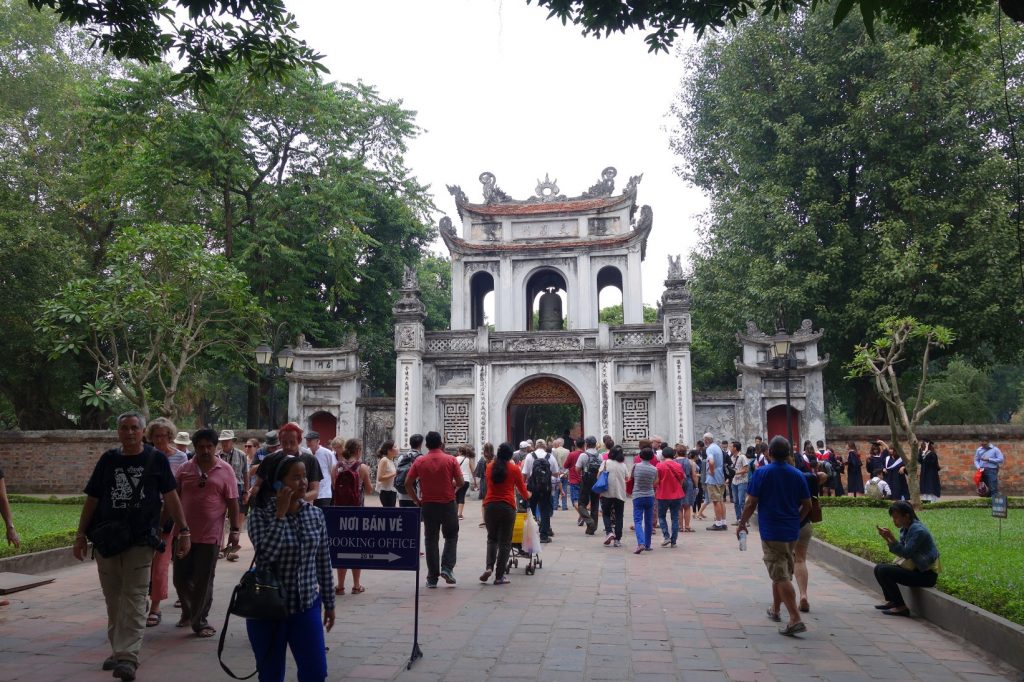
We were surprised to see so many students when we arrived. Apparently, it was graduation season so a lot of students were having their graduation photos taken here. Aside from that, the Temple of Literature hosts the Imperial Academy (Quốc Tử Giám), Vietnam’s first national university.
The Temple of Literature is a vast, rectangular complex which is divided into five courtyards. After making our way through the hordes of tourists, we passed through the Great Portico (Main Gate). The bell on the second level of this gate used to be sounded off whenever someone of importance passed through these gates.
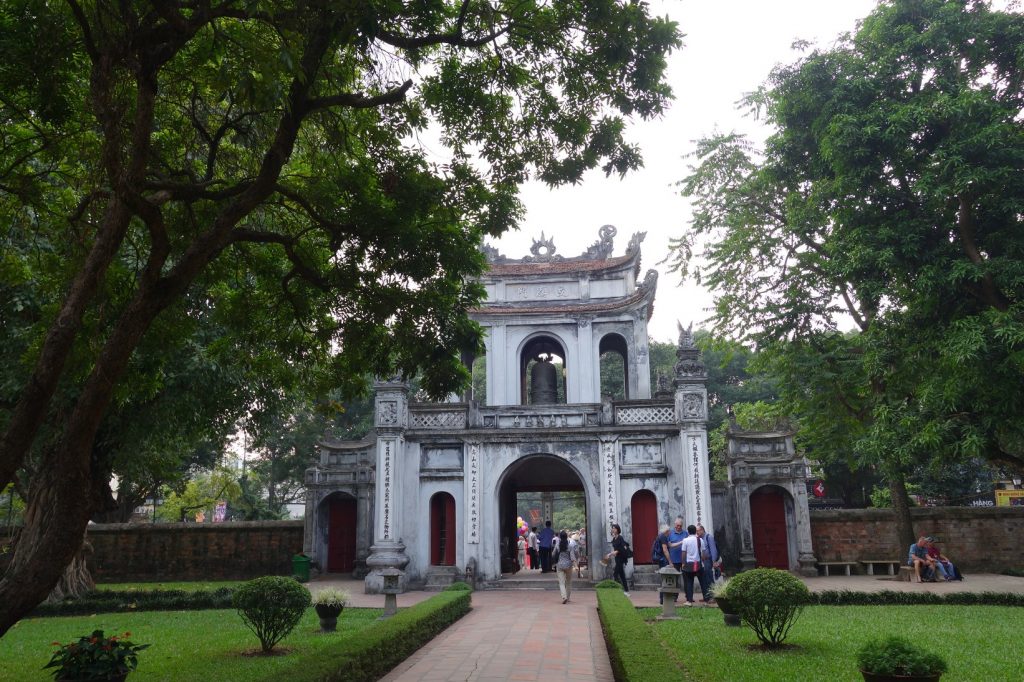
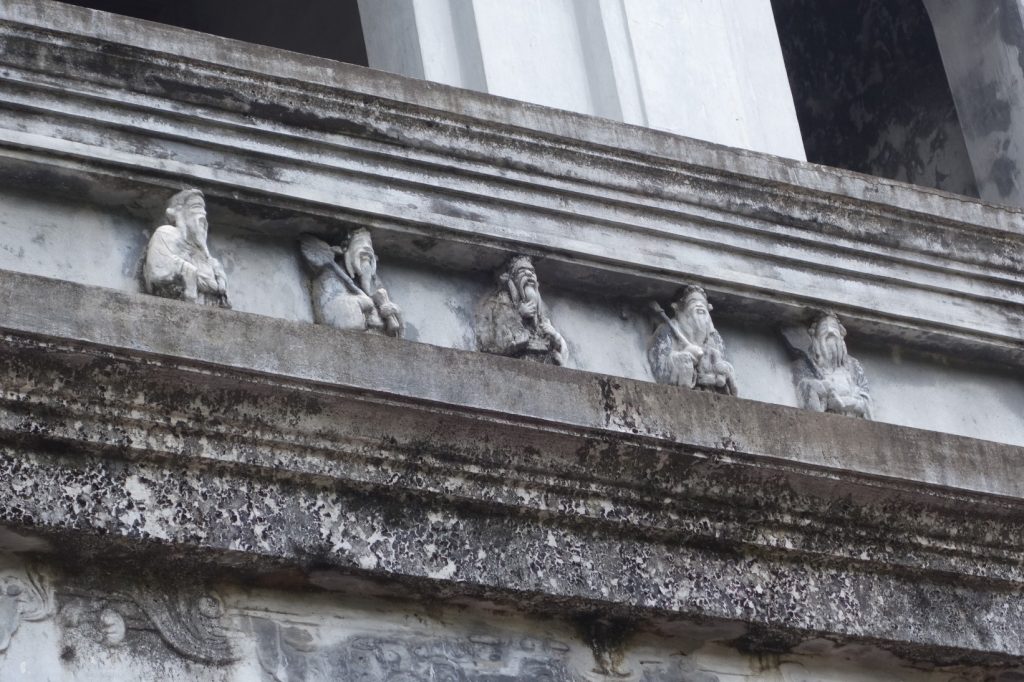
After entering the gate, we had a peaceful walk down this lovely courtyard lined with tall trees, shrubs, and grass.
The first courtyard extends from the Great Portico (Main Gate) to the Đại Trung (Great Middle Gate), which is flanked by two smaller gates: the Đạt Tài (Attained Talent) and the Thành Đức Môn (Accomplished Virtue).
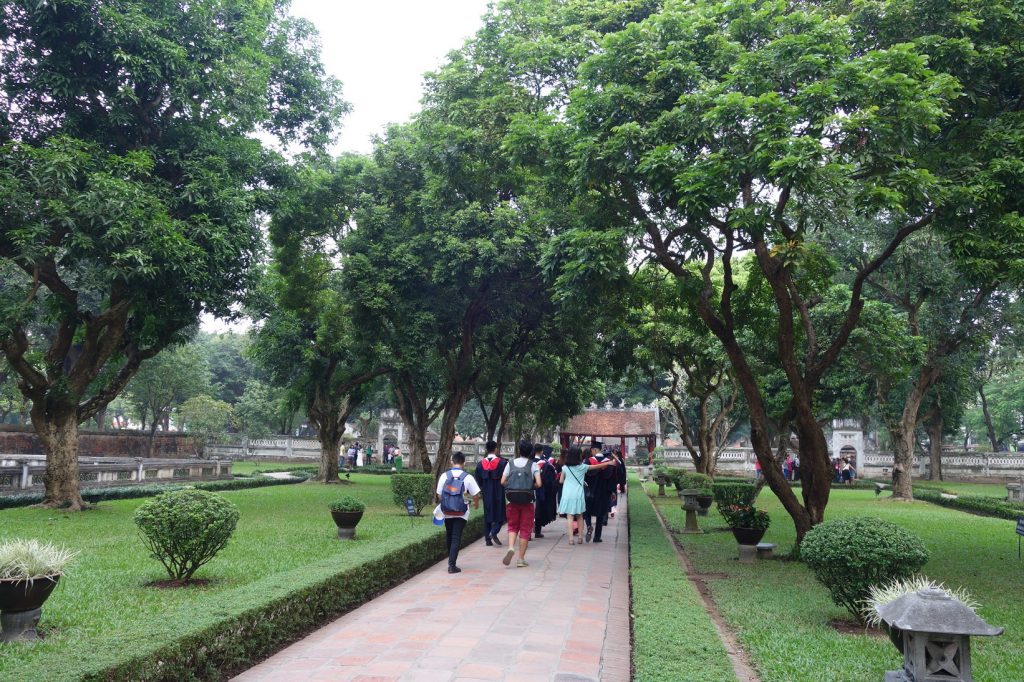
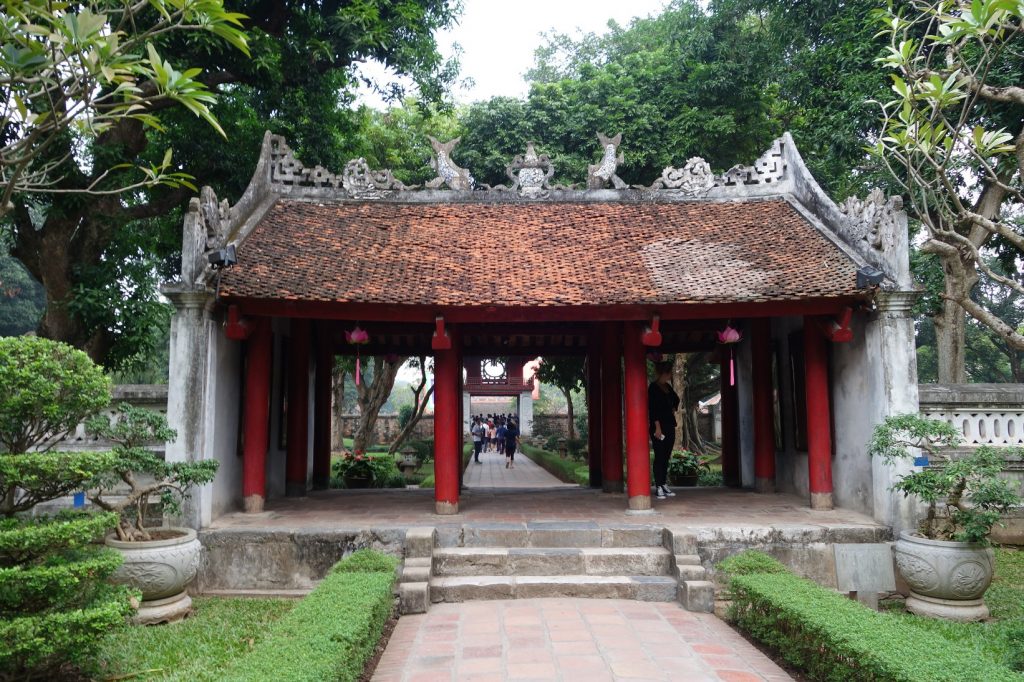
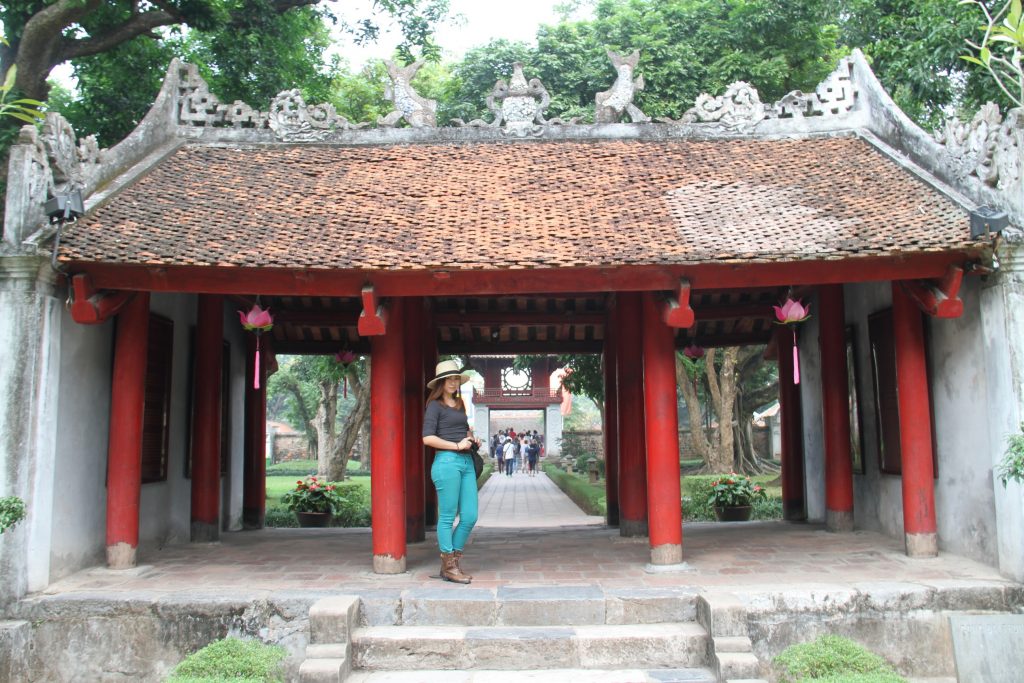
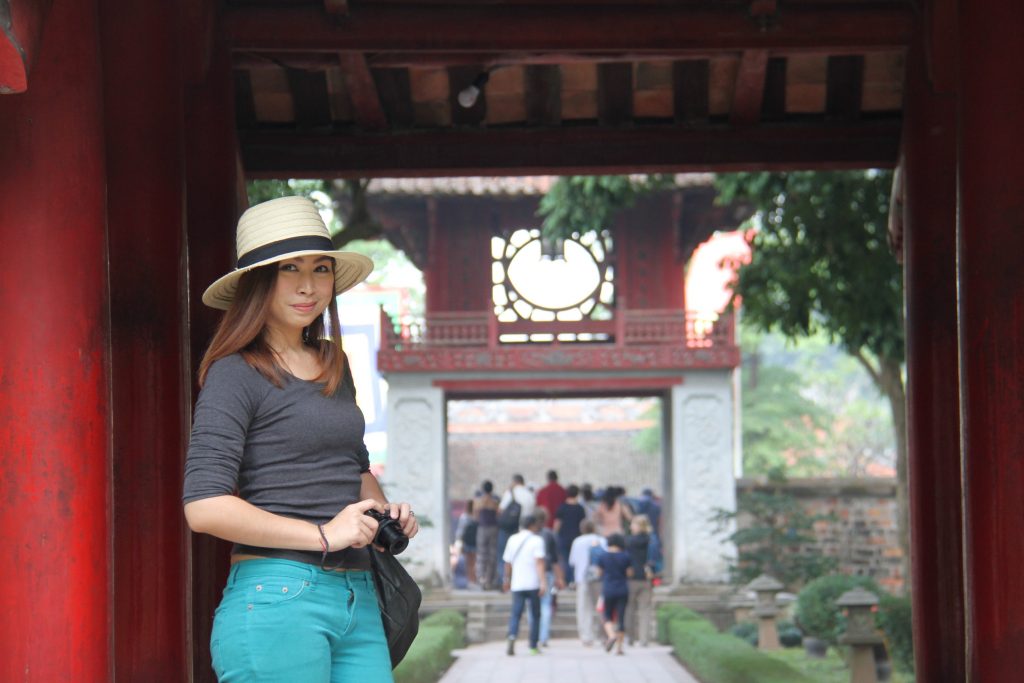
At the second courtyard is the Khuê Văn pavilion, which is said to be the symbol of the Hanoi capital today. To the sides of the pavilion are the Súc Văn gate (Crystallization of Letters) and the Bi Văn gate (Magnificence of Letters), which praise the beauty of the content and form of literature.
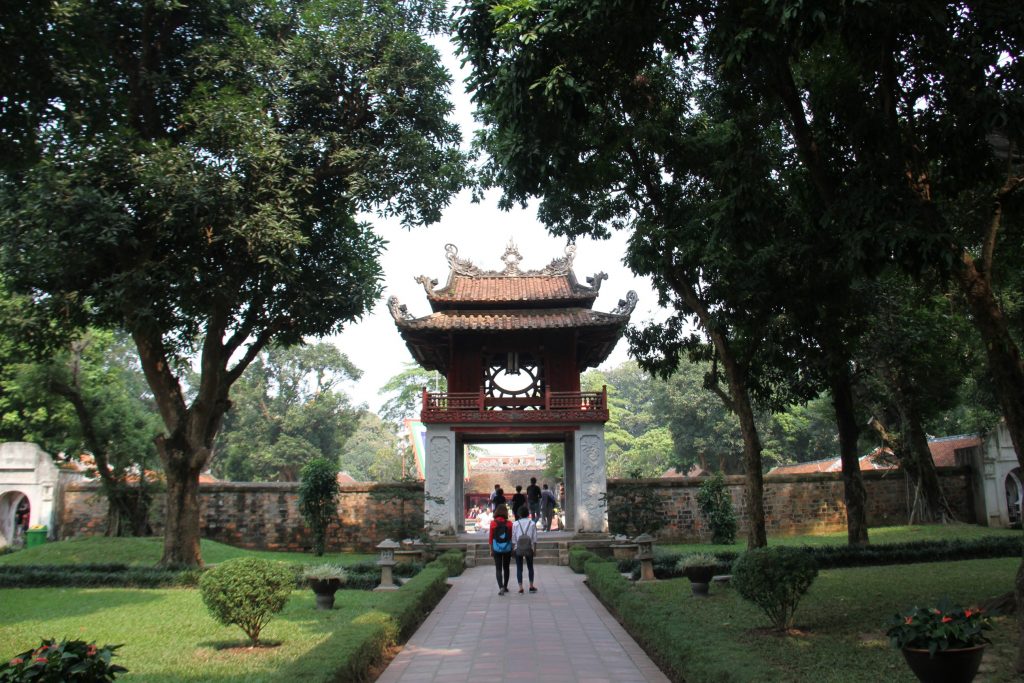
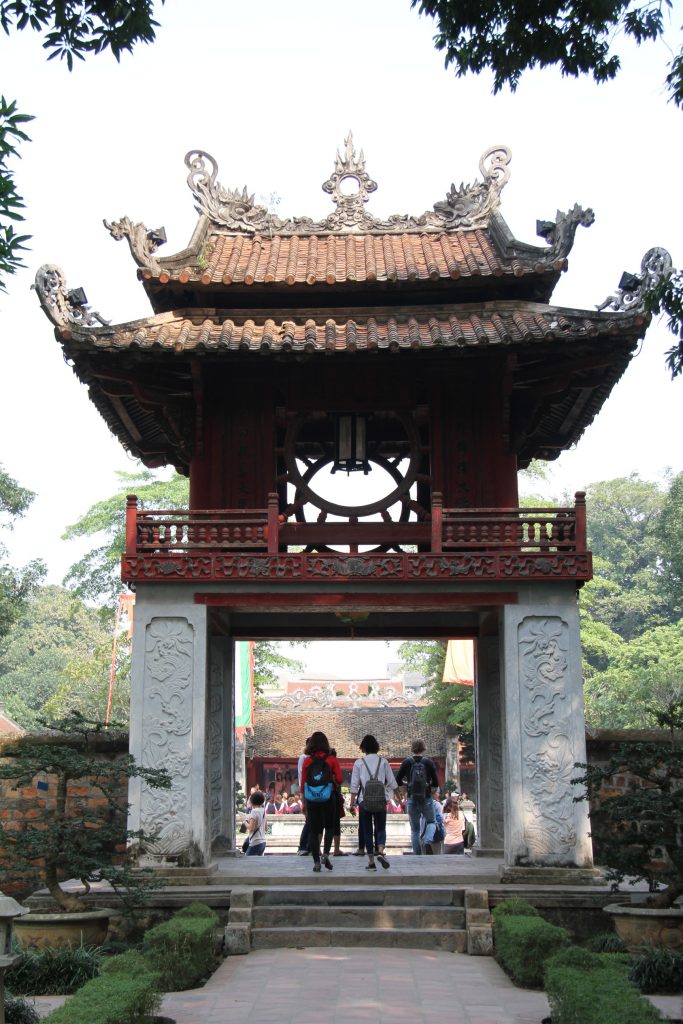
The third courtyard is where you can find the Thiên Quang well (The Well of Heavenly Clarity). Sadly, the water in the well isn’t exactly heavenly and clear.
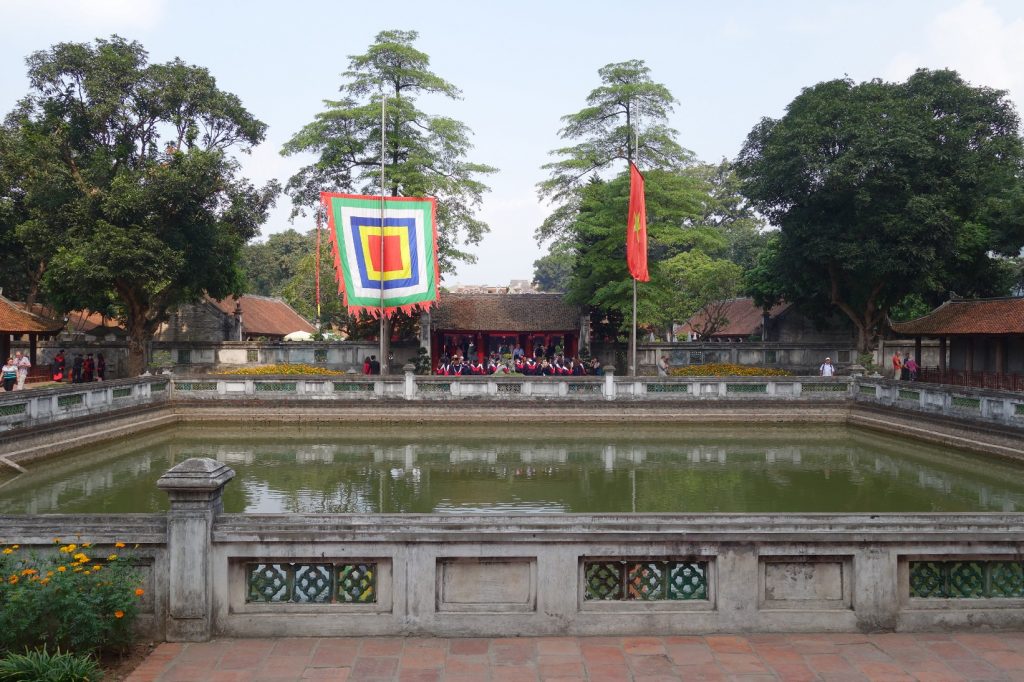
Our tour guide Huyen held up a 100,000 Vietnamese Dong bill while we were looking at this well and said: “Look, this well is on the bill!”
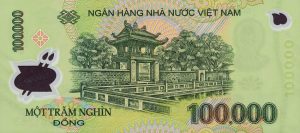
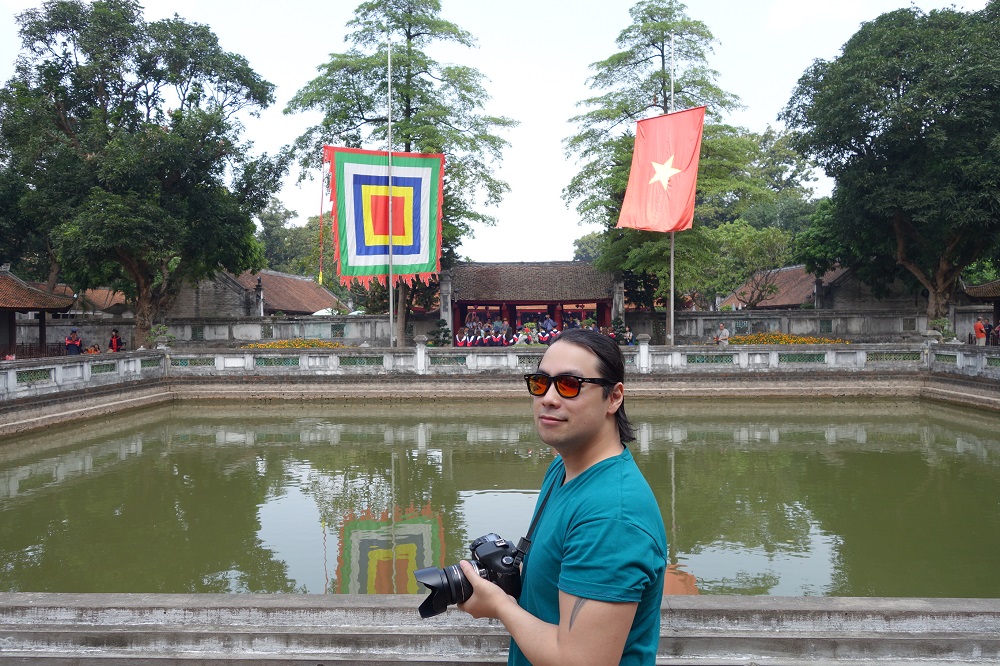
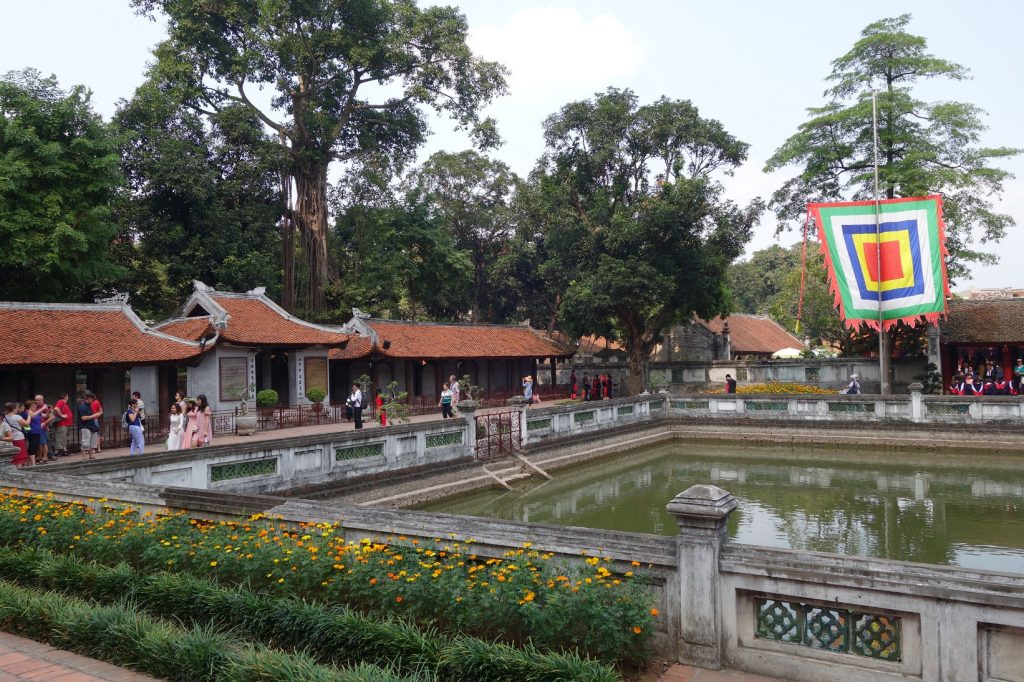
On both sides of the well are the 82 stelae of doctorates, which recorded the names and native places of the 1,307 graduates of the 82 Royal exams from 1442 to 1779. The stelae were put up to encourage the study of contemporary generations and generations to come.
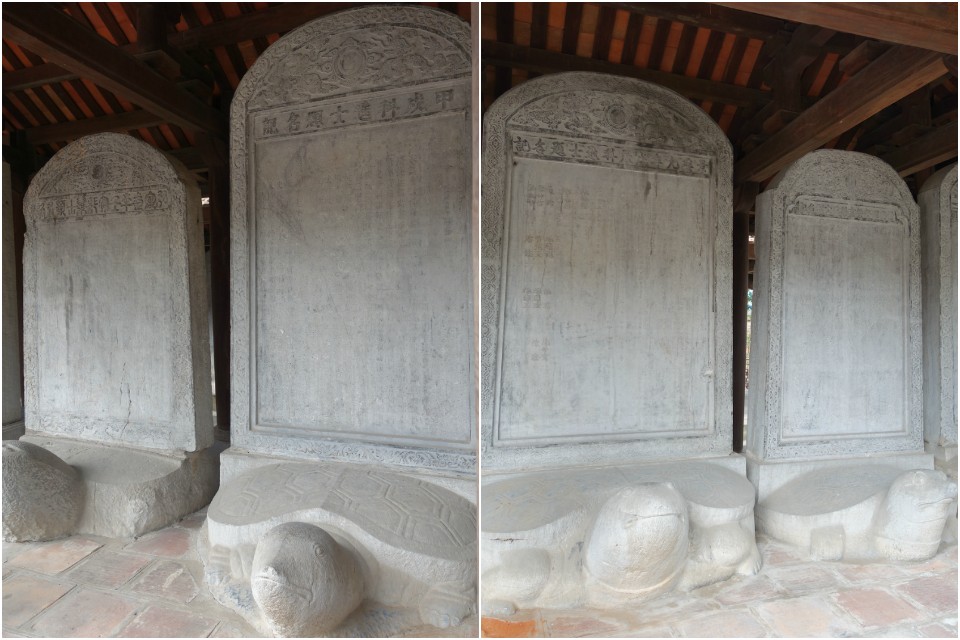
The stelae of doctor laureates were placed on top of tortoise shells. Known to live a long and healthy life, the tortoise is one of the country’s four holy creatures, along with the dragon, unicorn, and phoenix. The placement of the stelae shows everlasting respect to talent.
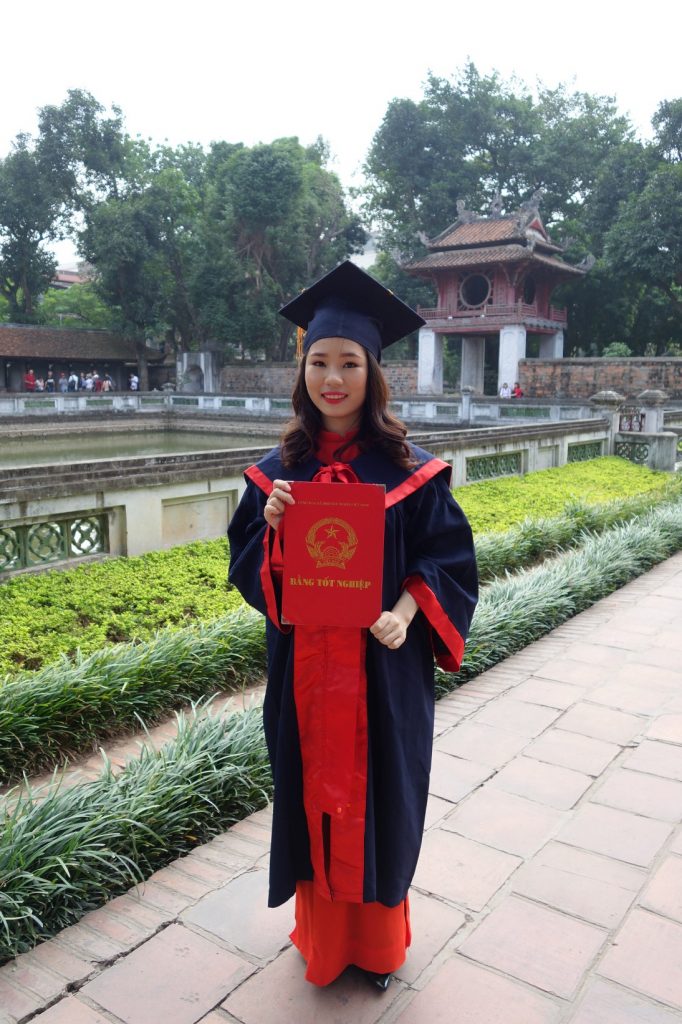
Passing through the Đại Thành (Great Synthesis gate), we finally arrived at the fourth courtyard where we found ourselves at the Bái Đường (House of Ceremonies). This was a busy and happening part of the temple, with students posing for photos and tourists taking photos of the students while they posed for photos!
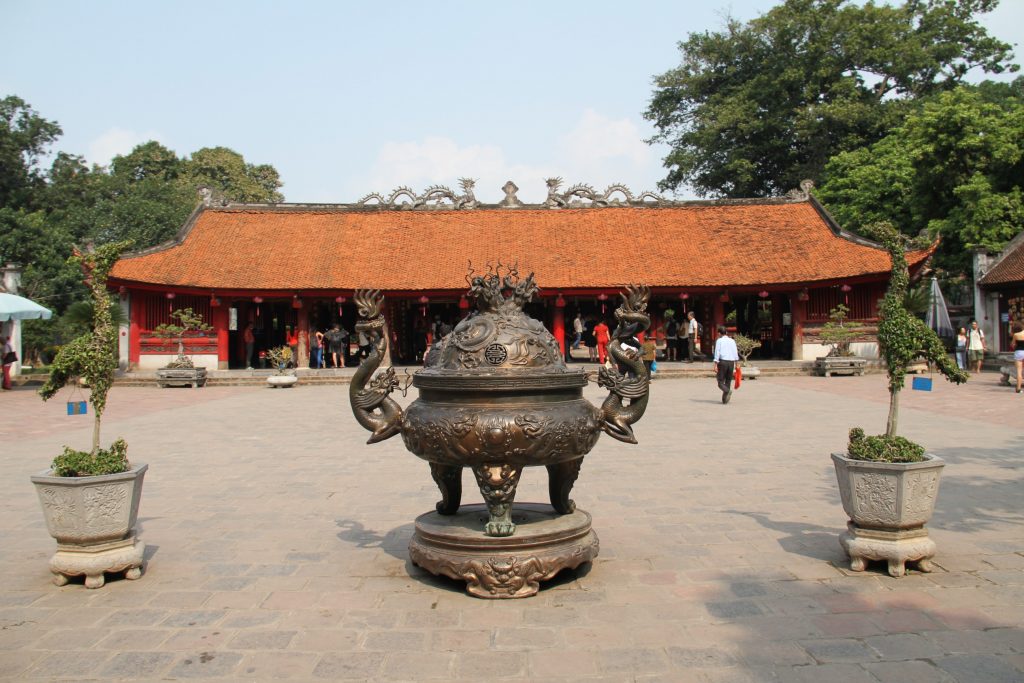
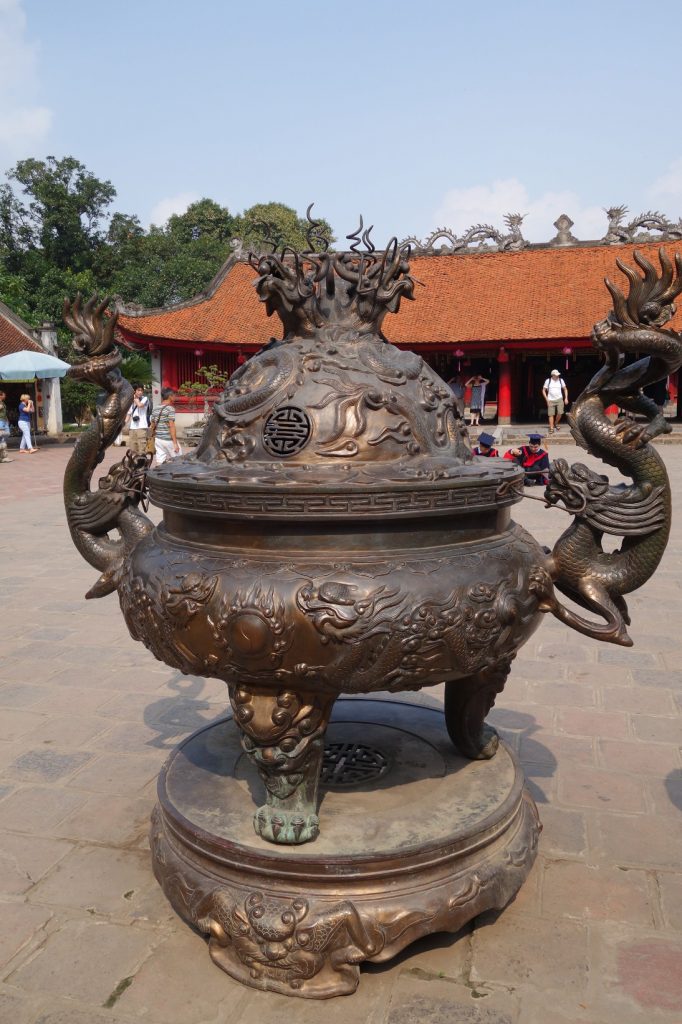
In this area is a small shop where you can buy all sorts of trinkets including books, musical instruments, and souvenirs. Before going to the Temple of Literature, the heel of my shoe started coming off, so I really had a hard time walking because I was dragging my feet! Thankfully, I chanced upon this small shop! I bought some gum so I could use it to stick the heel to the base of my shoe, but the saleslady — though she could not speak in English — found a shoe adhesive for me, so I used that instead. Bless that lady! If not for her, I would have spent some of my pocket money shopping for a new pair of shoes!
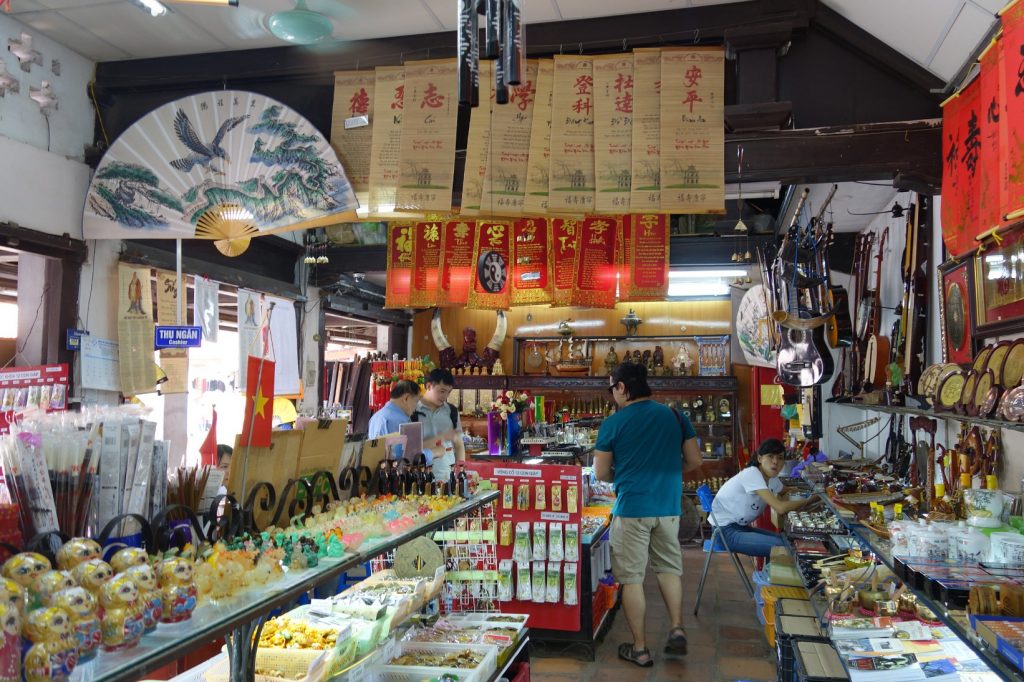
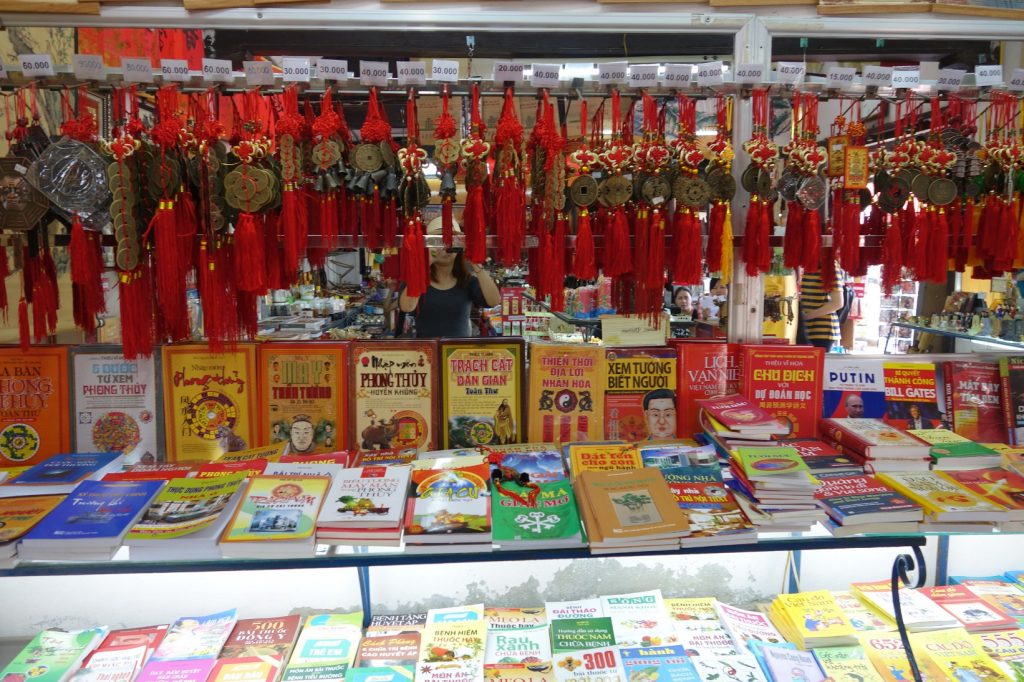
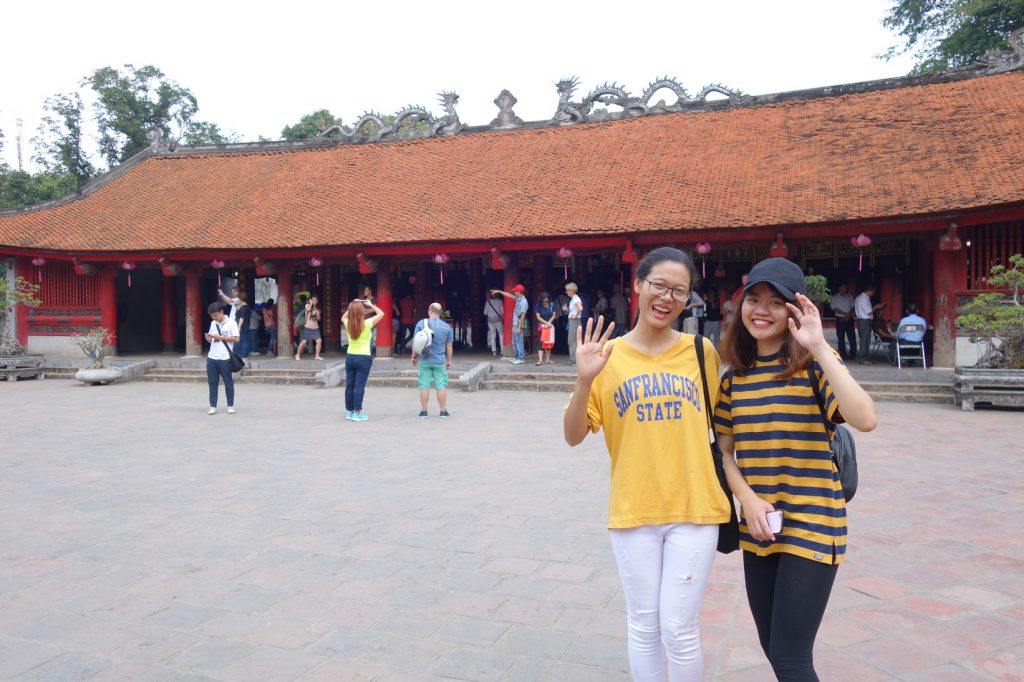
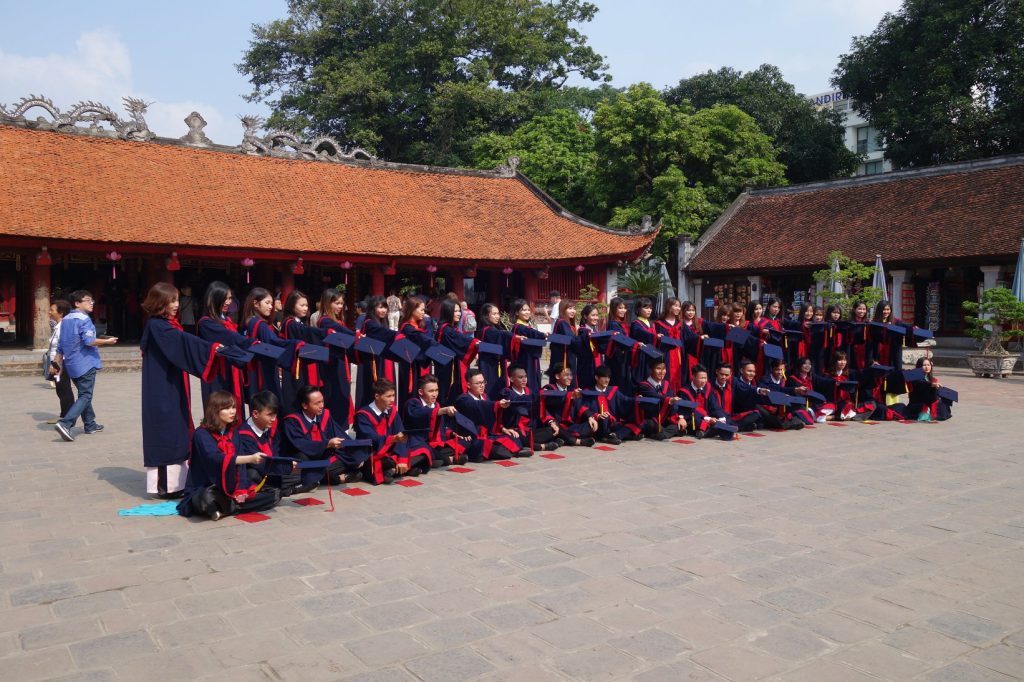
The Bái Đường (House of Ceremonies) was exactly that: a house of ceremonies! This is where ceremonies and rituals took place. There was an ornate table with offerings and incense. The table was tall though, so I had to tiptoe to take this photo.
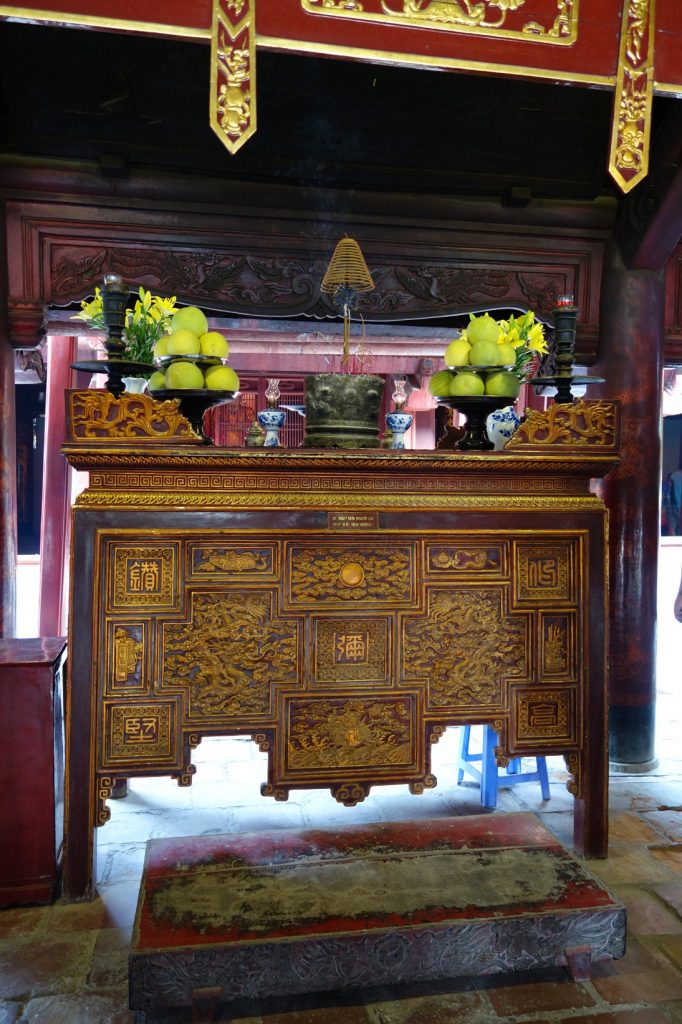
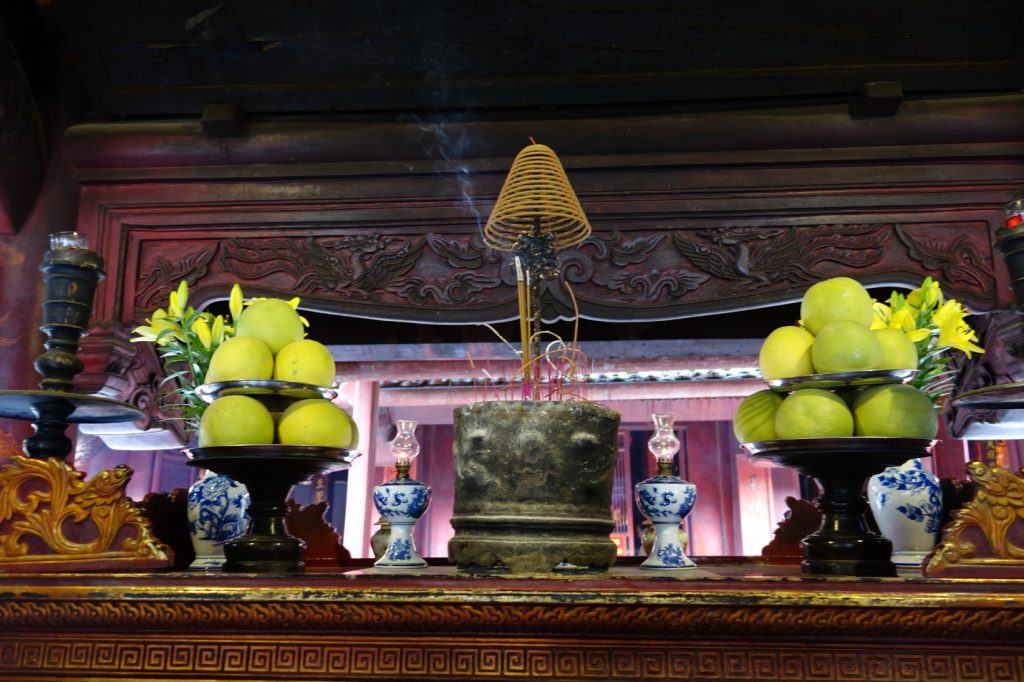
On each side of the table are bronze cranes standing on the back of tortoises. The tortoise represents heaven and earth, and by now, you know that it also symbolizes longevity. The crane is also an image of longevity. It is believed that the tortoise lives to ten thousand years, while the crane for one thousand years. Hence, this statue signifies the saying “May you be remembered for one thousand years, and your cult endure for ten thousand years.”
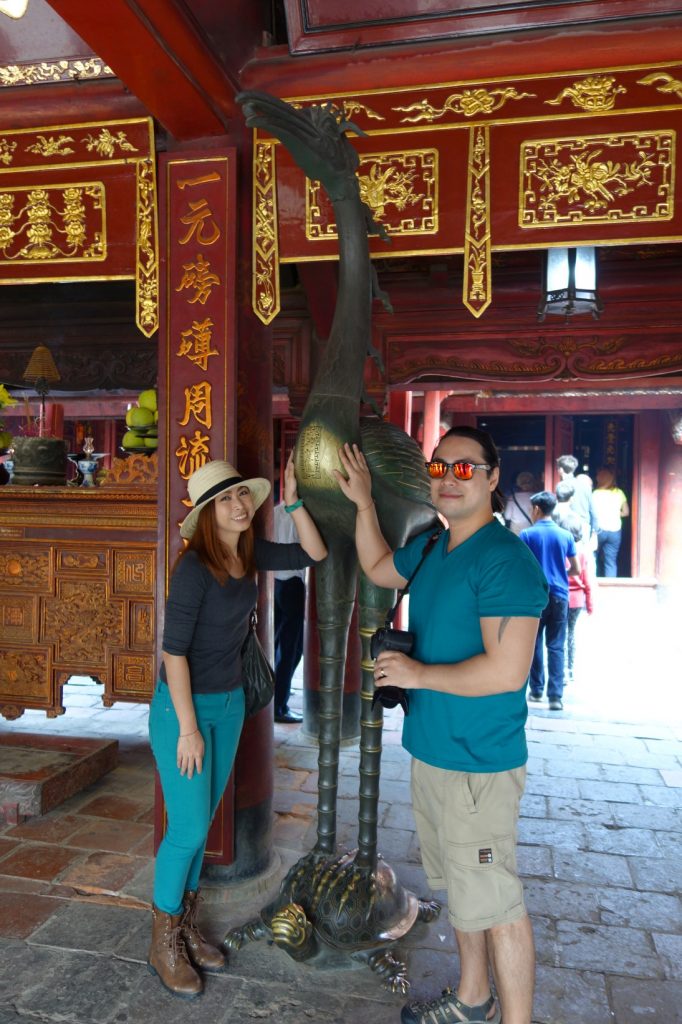
The building next to the House of Ceremonies is the Đại Thành Sanctuary, where Confucius and his four closest disciples Yanhui, Zengshen, Zisi, and Mencius are worshipped. The sanctuary also houses altars to 10 honored philosophers.
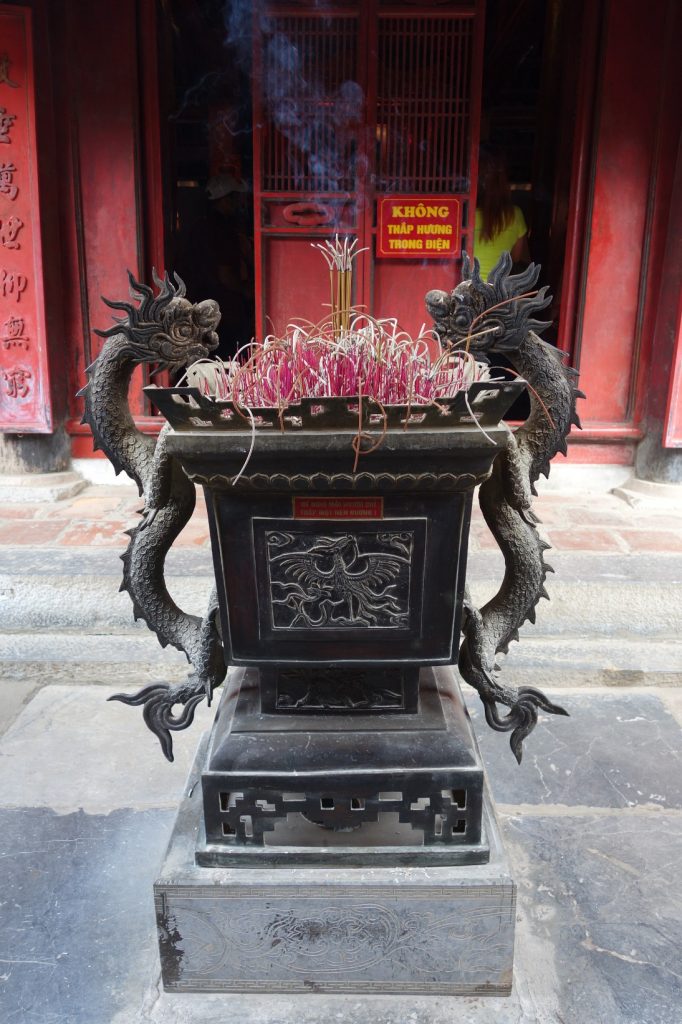
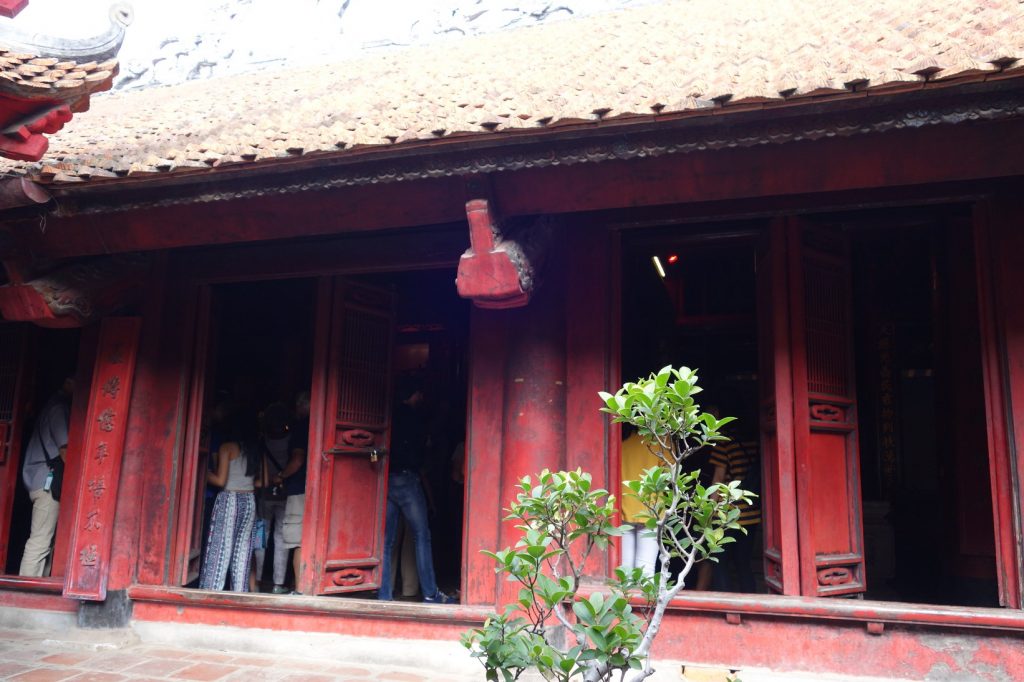
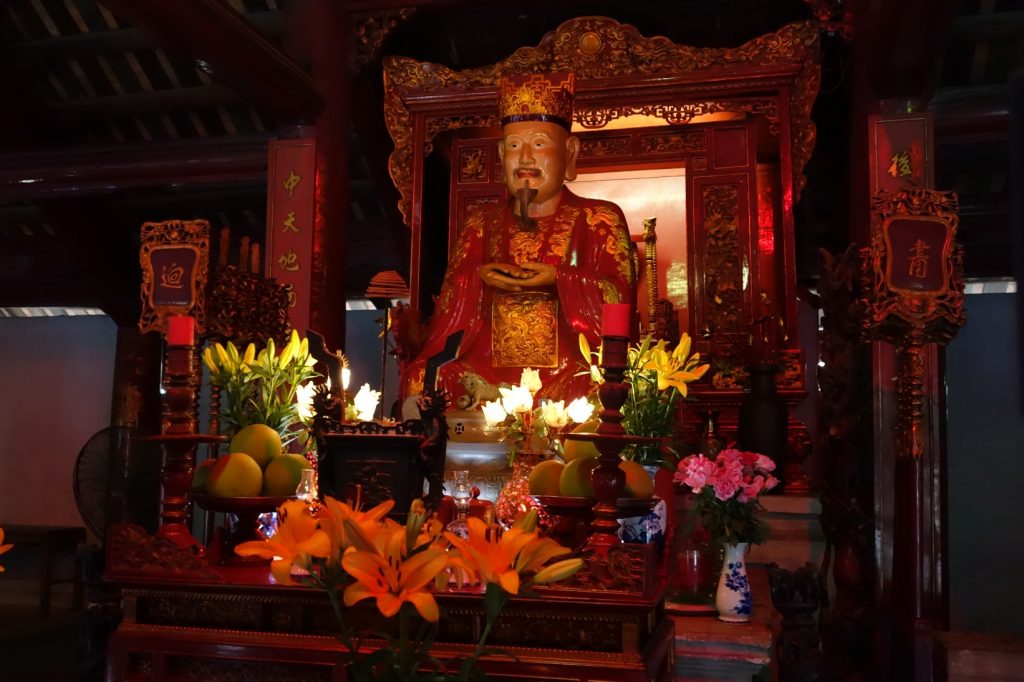
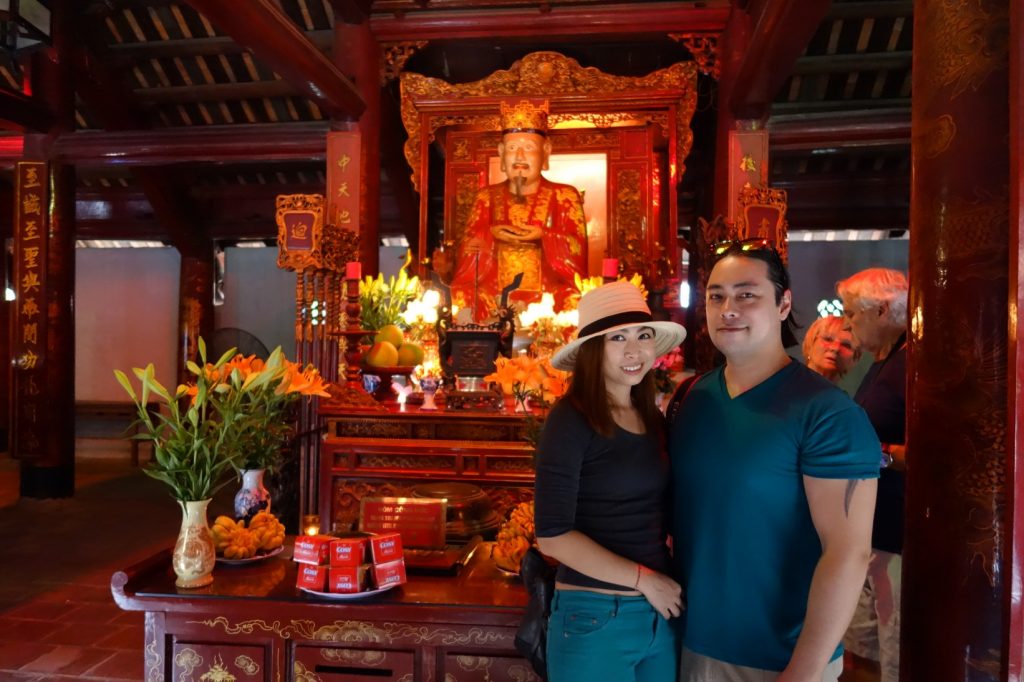
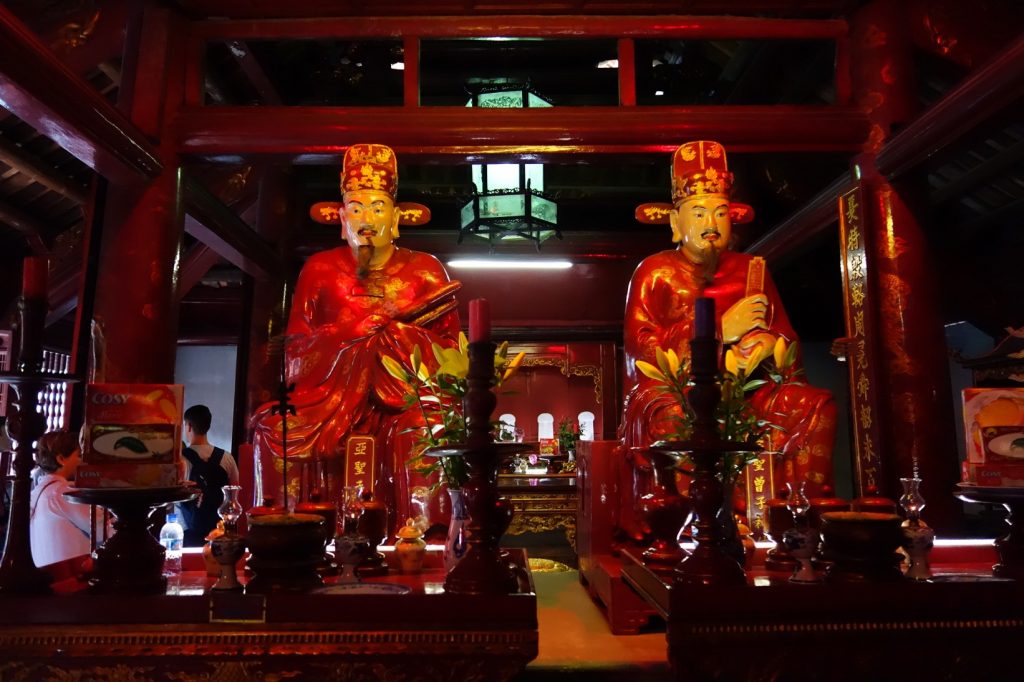
What was really funny — and what caught our attention — were the offerings placed next to the statues.
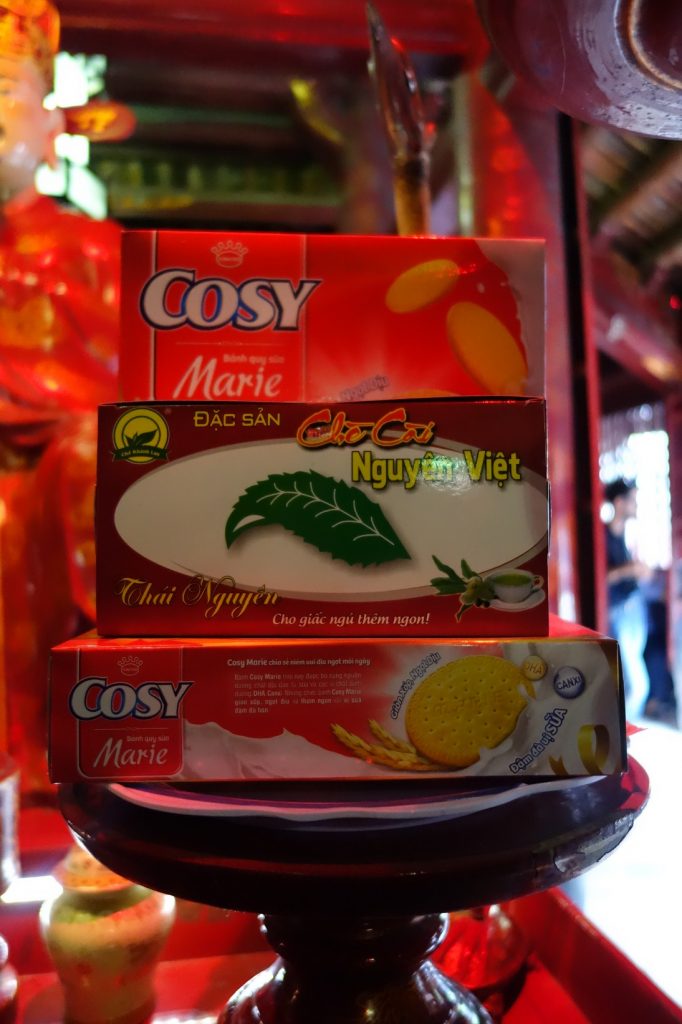
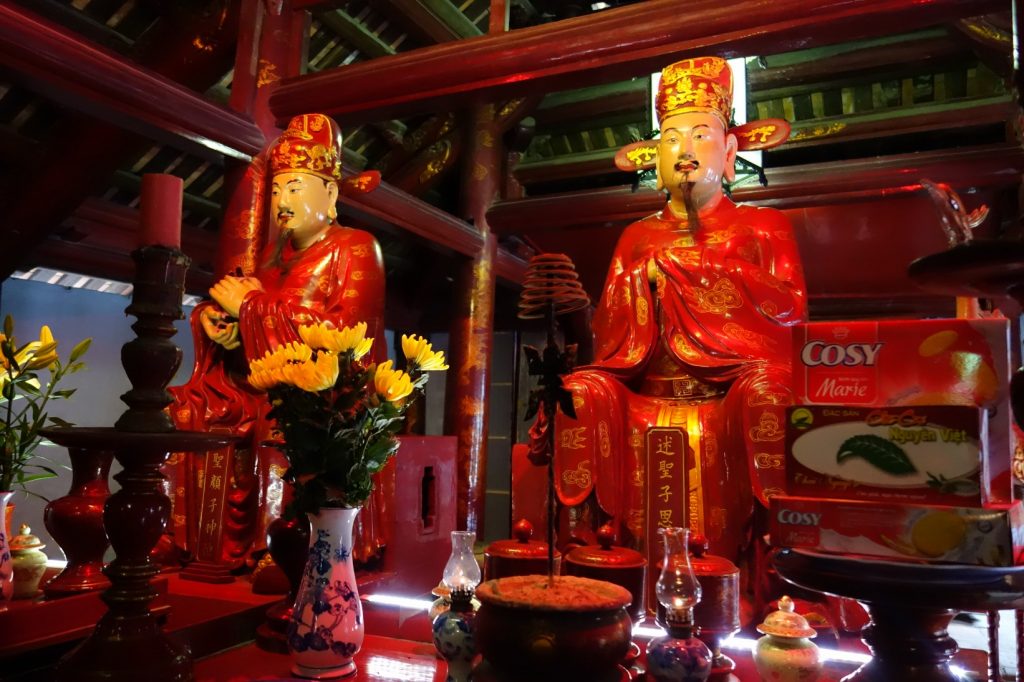
I’m not sure exactly why visitors give Cosy biscuits as offerings, but I remembered this church in the Philippines called St. Claire Monastery in Katipunan where people buy dozens and dozens of eggs and leave it as offerings to the nuns. I guess it’s the same thing with the Cosy biscuits! Huyen did say that it’s sort of like a marketing strategy for Cosy.
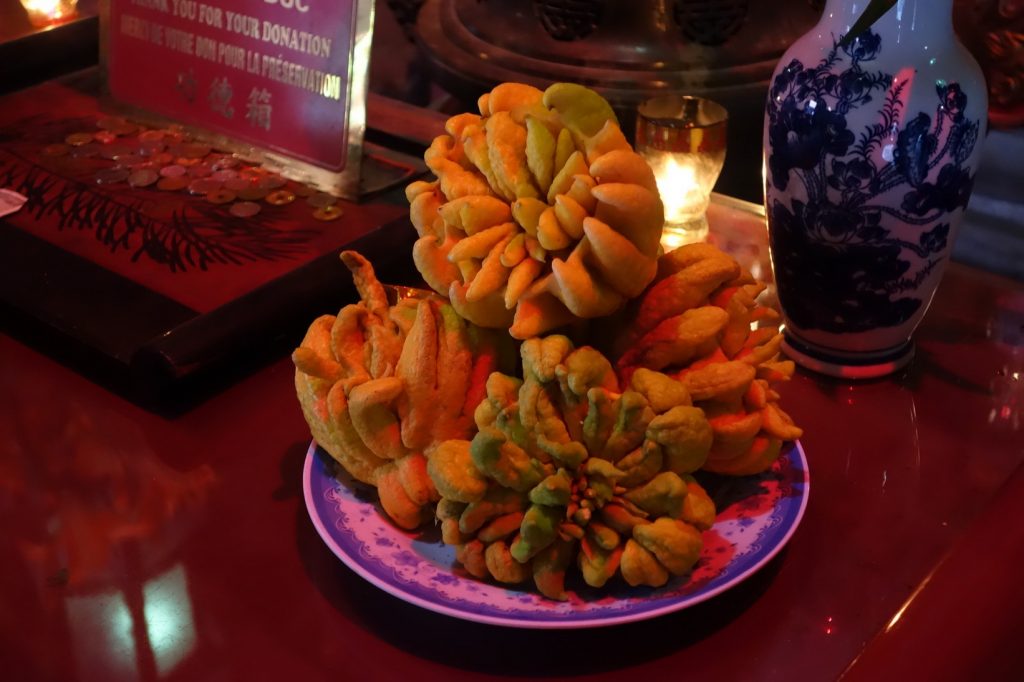
Aside from the Cosy biscuits, people also leave flowers and fruits as offerings. One specific fruit stood out because to me, it looked like a cross between a cluster of bananas and a bunch of scary-looking alien fingers. I guess the alien fingers made more sense, because this fruit is called “Buddha’s hand” or Phat Thu in Vietnamese. This is rarely eaten by the Vietnamese. (Maybe because no one really wants to eat fruit that looks like creepy fingers?) Instead, these are used mostly as offerings and in homes. For those who do use it in their homes, they make sure to choose a Buddha’s hand with more “fingers” because more “fingers” means more luck!
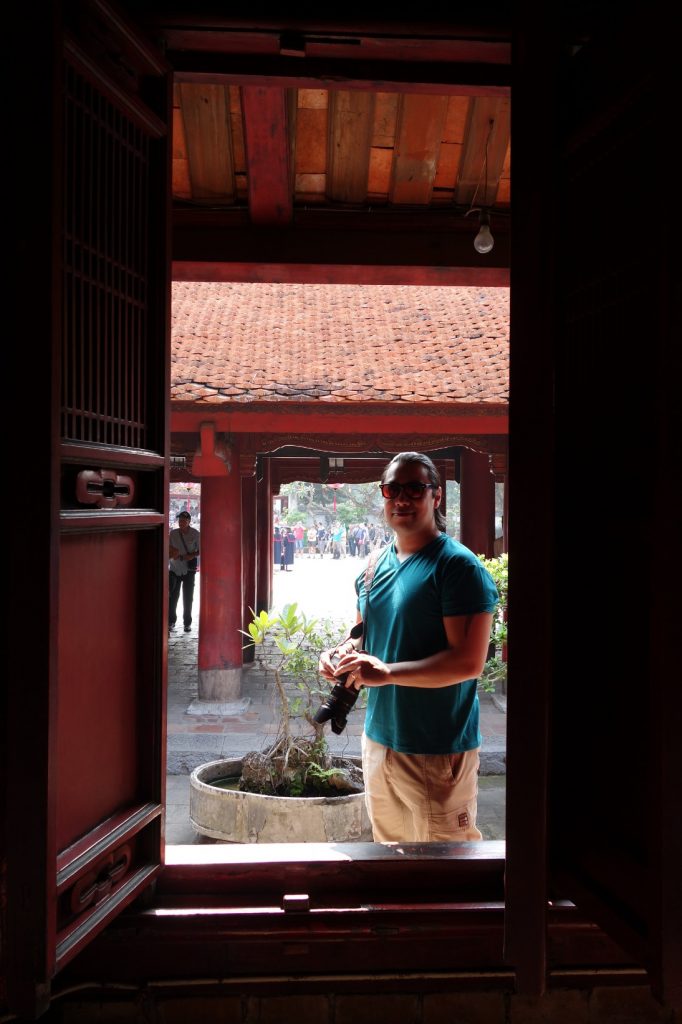
After saying hello to Confucius and the 4 Sages, we moved on to the fifth courtyard, which was originally the first National University, used for the instructions and studies of Confucian scholars. The last courtyard in the temple is called the Thái Học Courtyard, which is home of the Quốc Tử Giám (Imperial Academy).
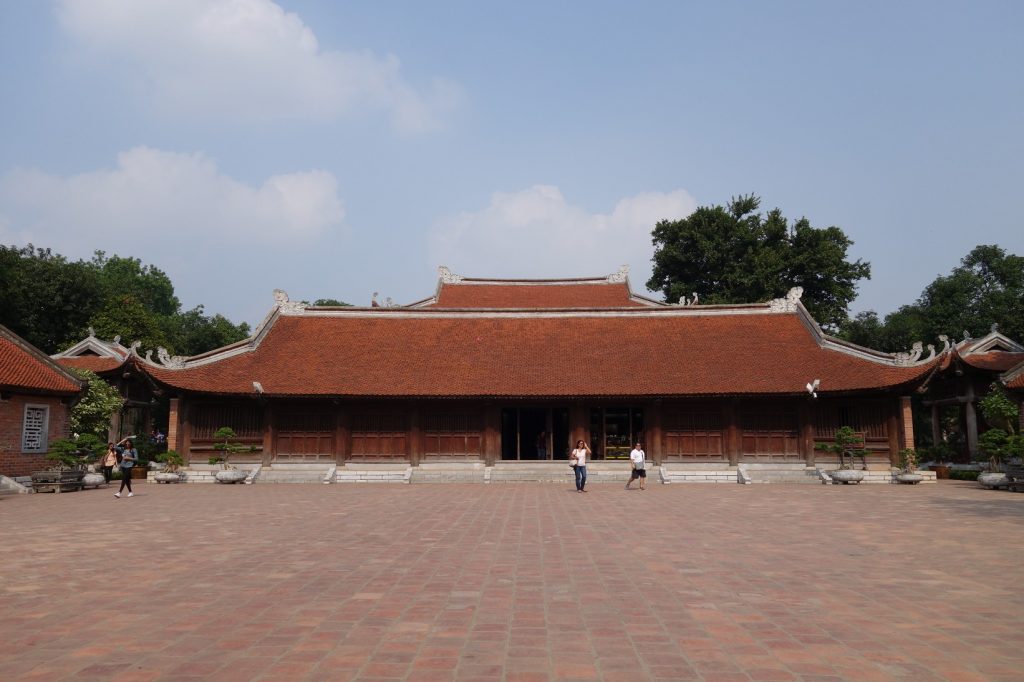
The Thái Học Courtyard was constructed in 2000 to honor the national traditions of culture and education in Vietnam.
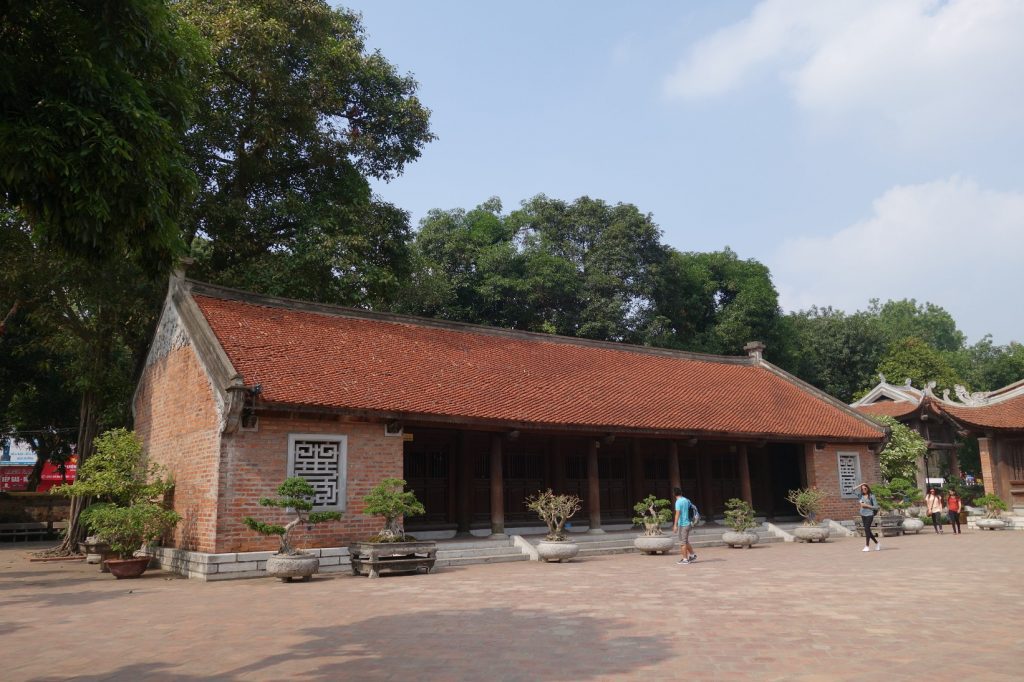
In the past, the Thái Học Courtyard was a school. Today, it is where the talents of the country are honored, where the cultural and scientific activities take place in order to inherit and bring into play the valuable traditions of the nation.
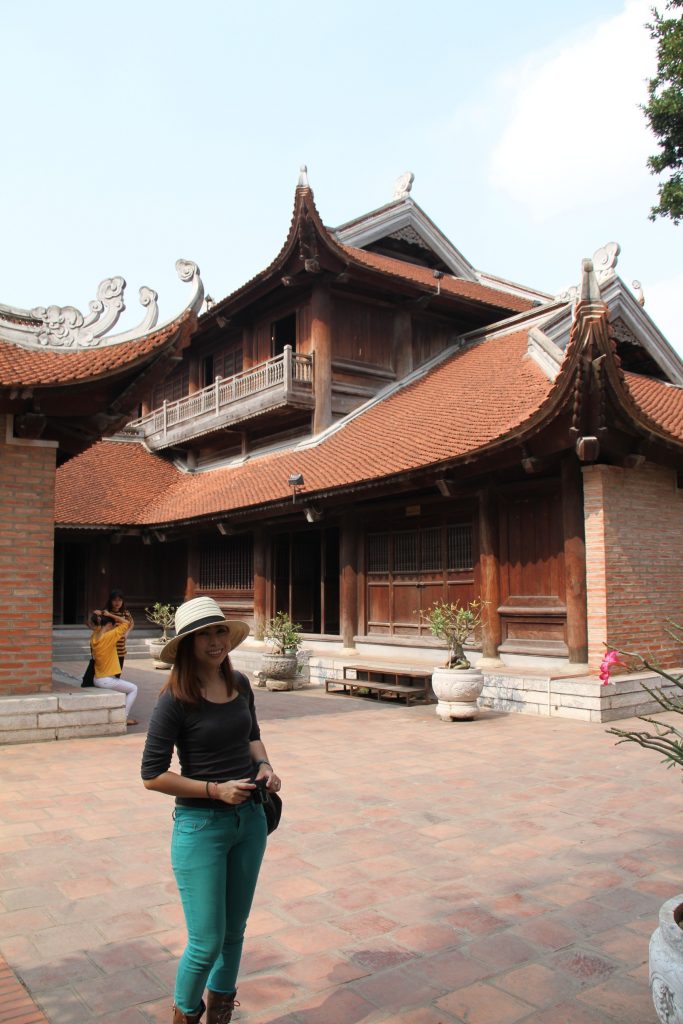
Inside, we saw a cabinet with a costume and belongings of a National University student, as well as a cabinet with wooden printing blocks and the inter-provincial examination papers.
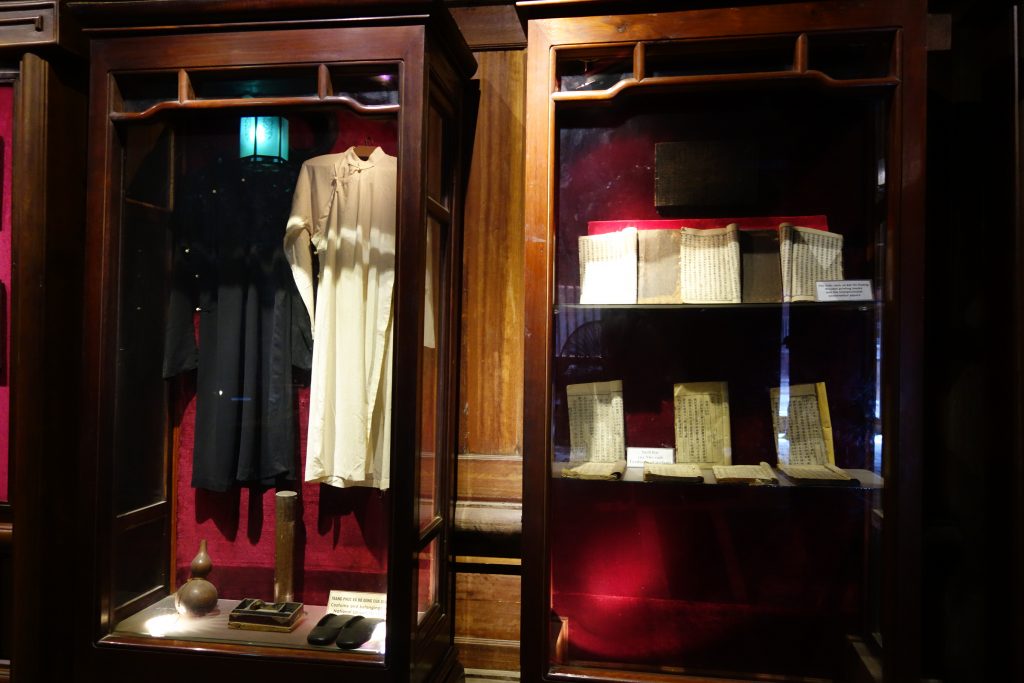
The upper floor of the building is dedicated to the three kings who contributed most to the foundation of the Văn Miếu and Quốc Tử Giám and to the development of the Confucian education in Vietnam: Lý Thần Tông, Lý Nhân Tông, and Lê Thánh Tông. (They all sound the same!)
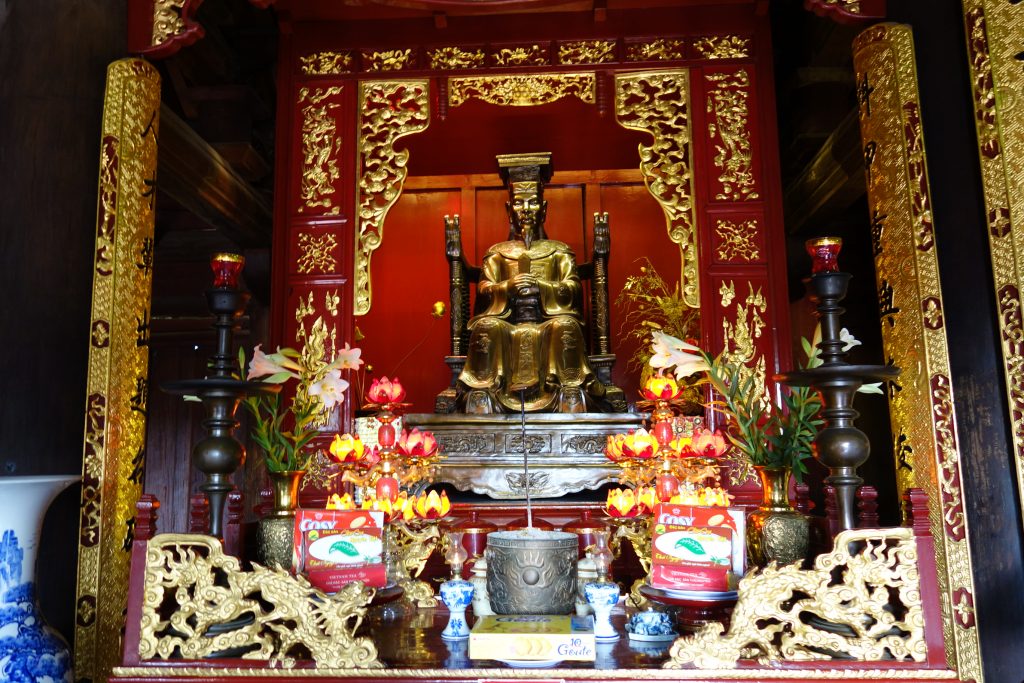
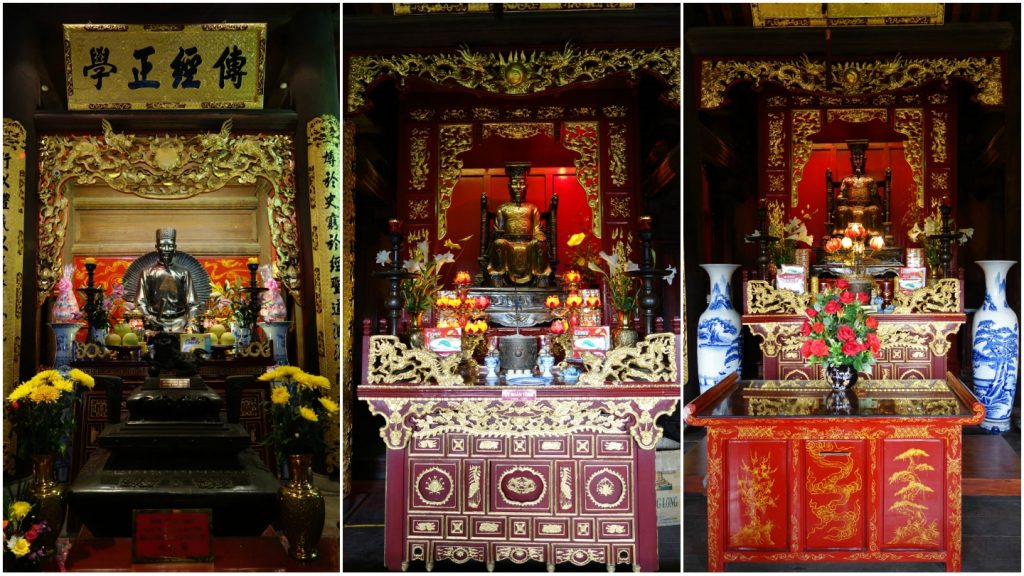
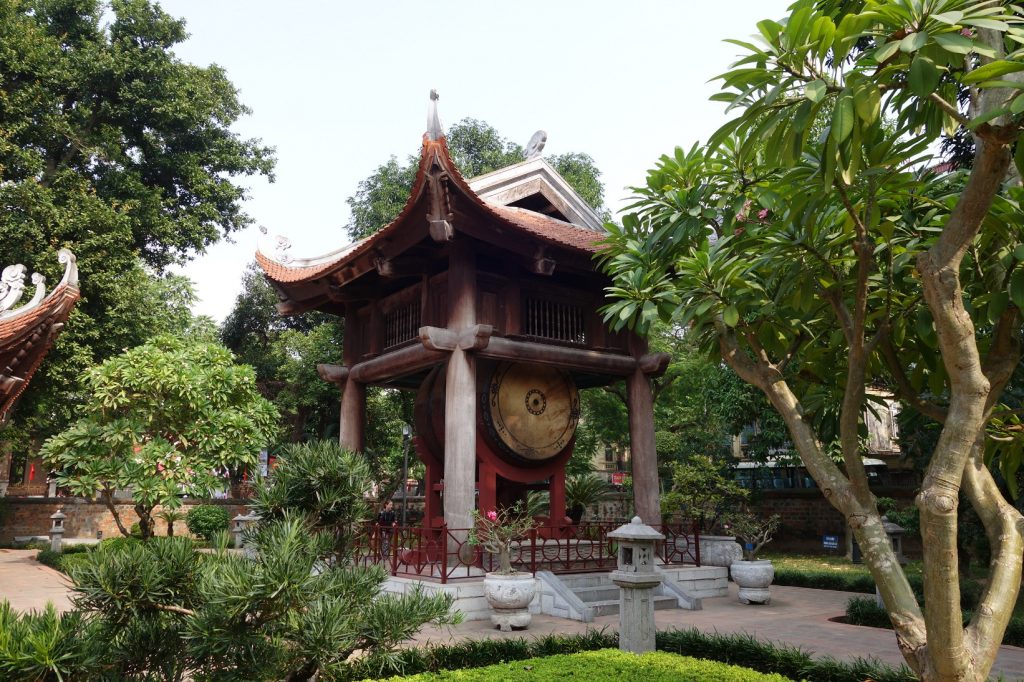
In both sides of the rear building, you can find square houses for a drum and a bronze bell. The drum is 2.65m high and weighs 700kg!
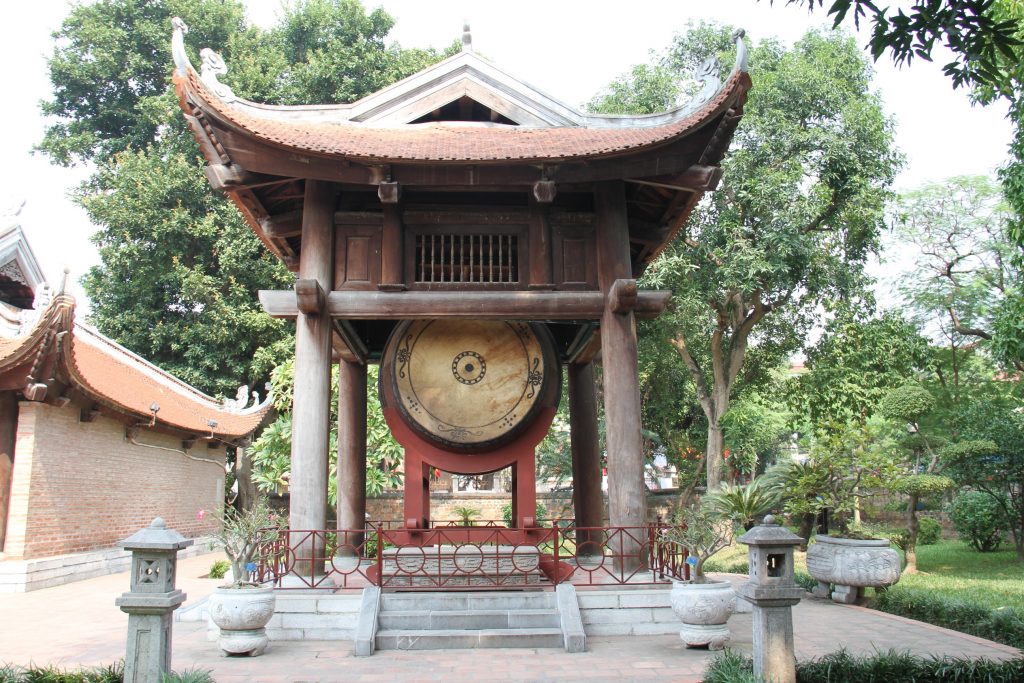
We’ve been to all the five courtyards, and it was time to go back!
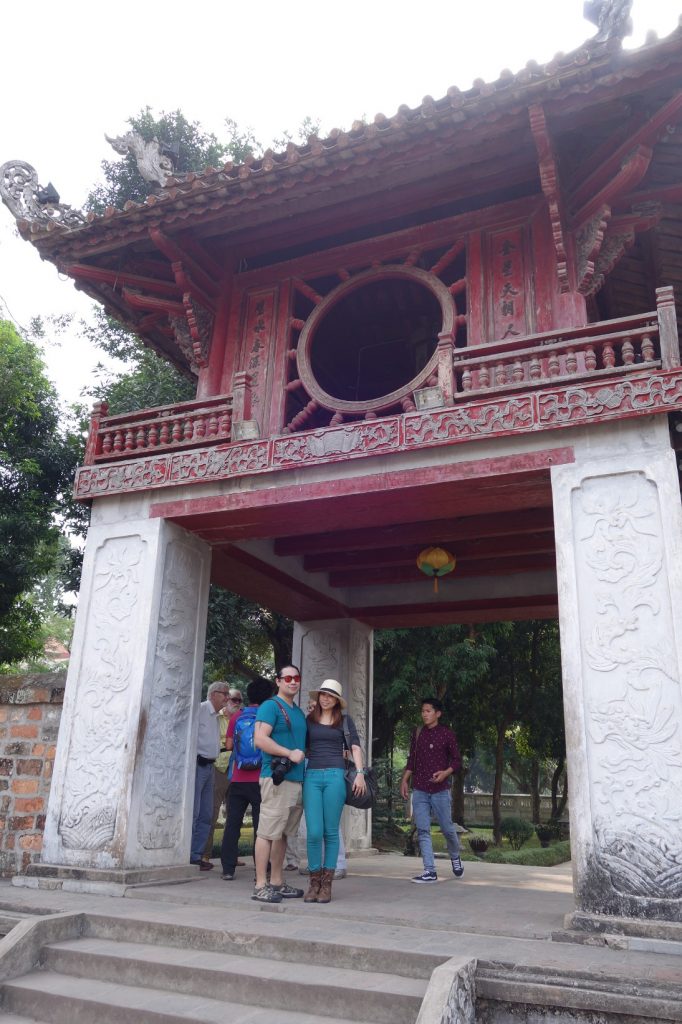
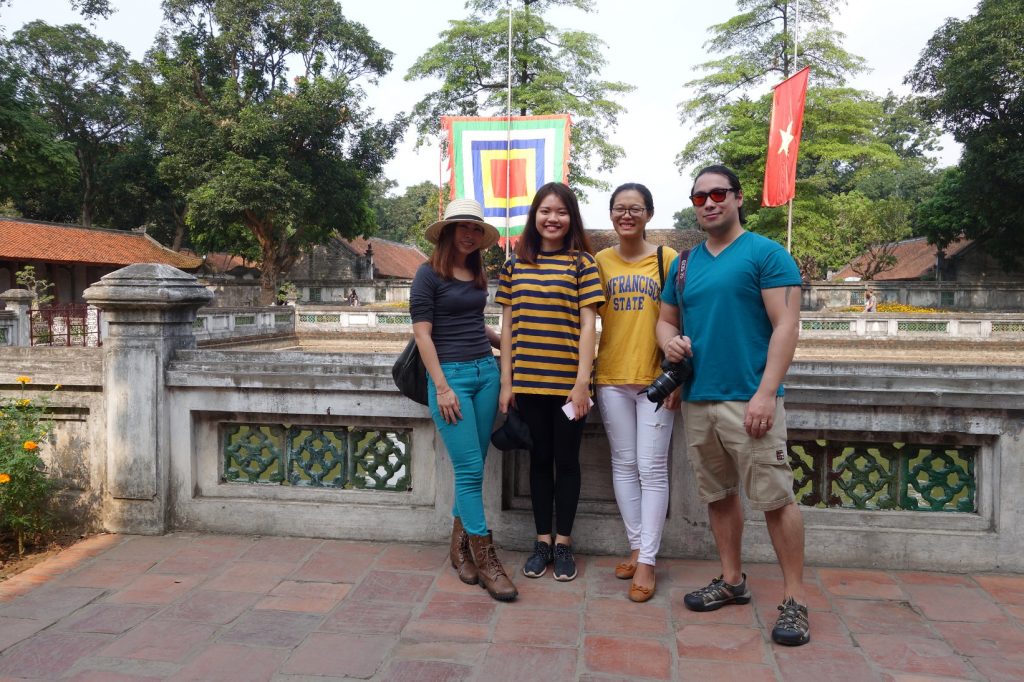
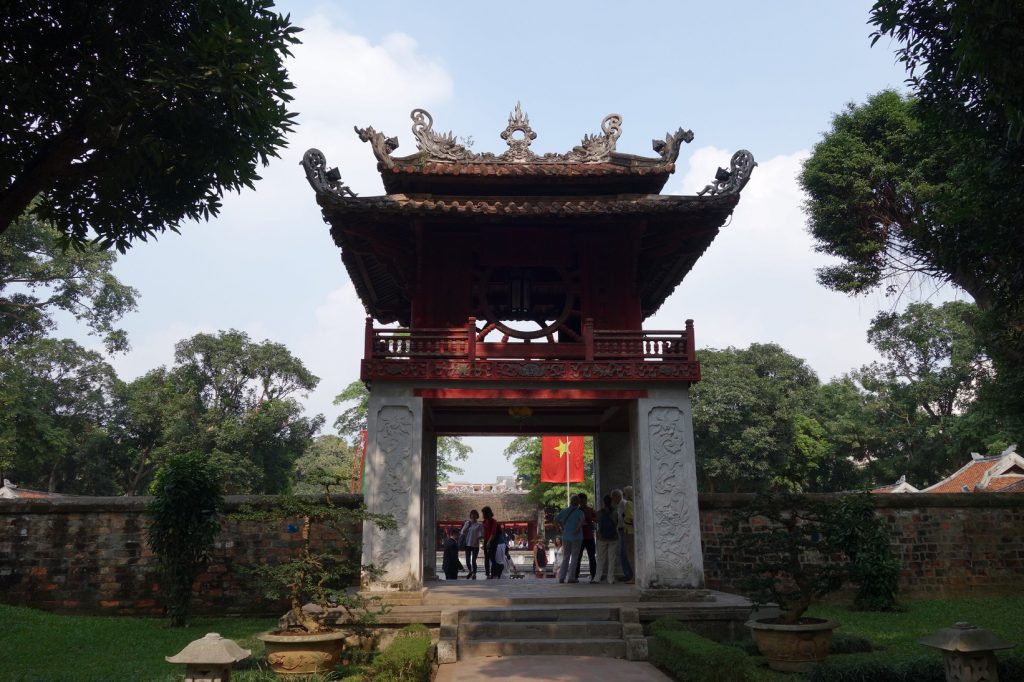
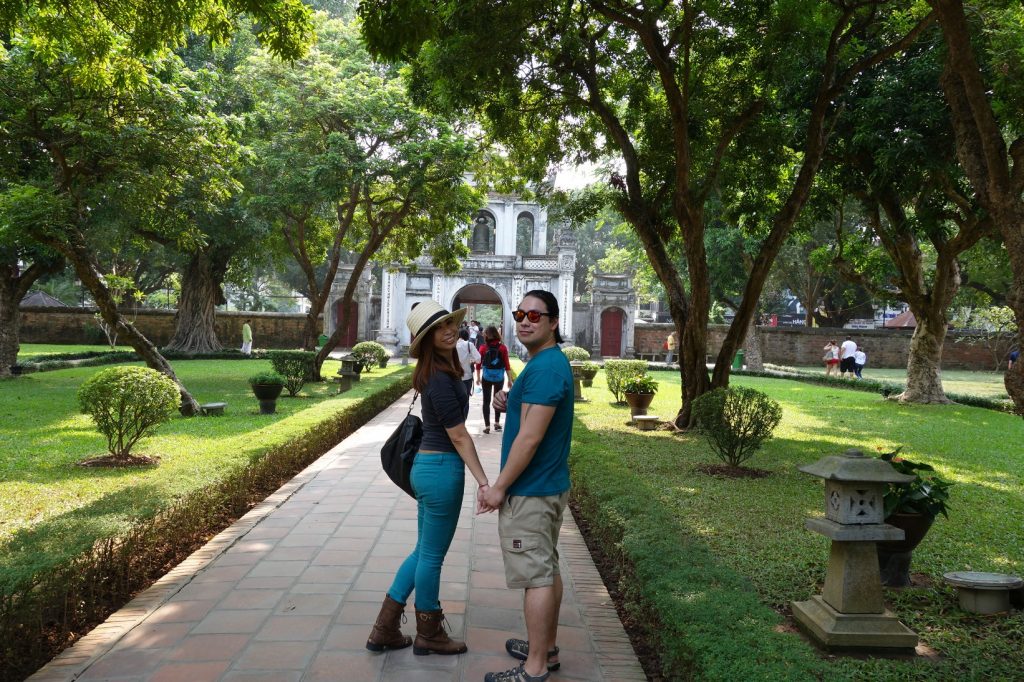
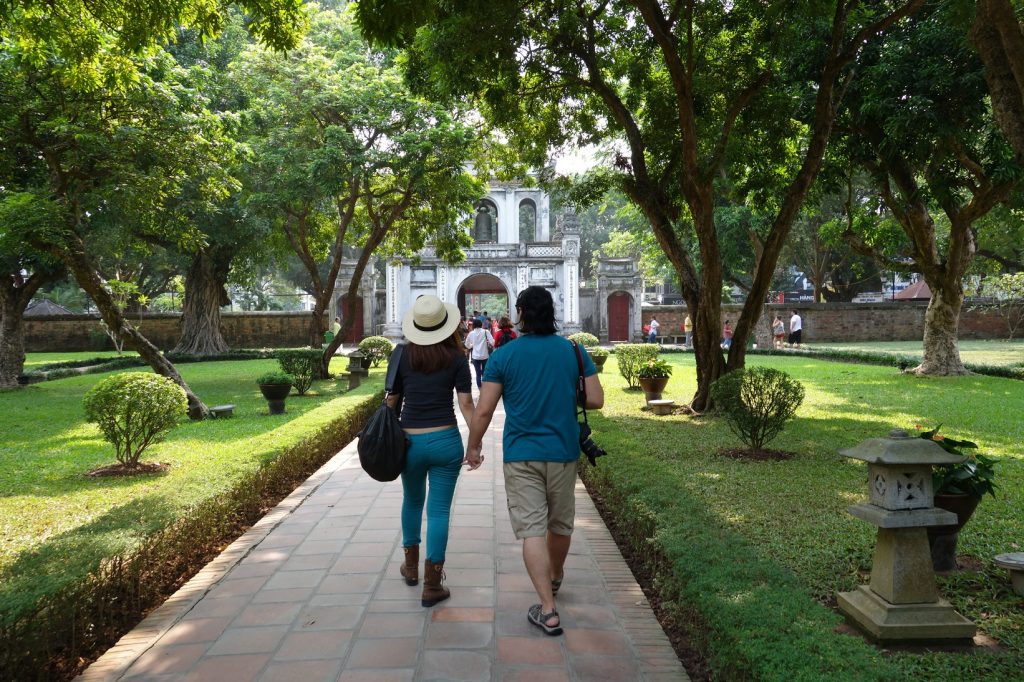
If you only have a few days in Hanoi and you can’t visit all the temples, do try to squeeze the Temple of Literature in your itinerary. After all, this is one of Hanoi’s highlights! If you are interested in architecture, history, and nature, you can find all of those in this temple.
Temple of Literature
Address: 58 Quốc Tử Giám, Văn Miếu, Đống Đa, Hà Nội, Vietnam
Phone: +84 4 3747 6013
Admission Fee: VND 10,000
Opening Hours: Tuesday – Sunday 8:30 – 11:30 & 13:30 – 16:30
Dress Code: None
♥♥♥♥♥♥♥♥♥♥♥
More stories from our Hanoi trip on: #PuffAndFluffHANOImoon
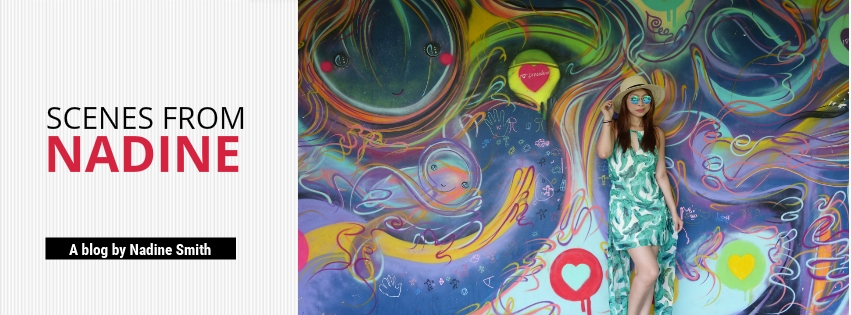
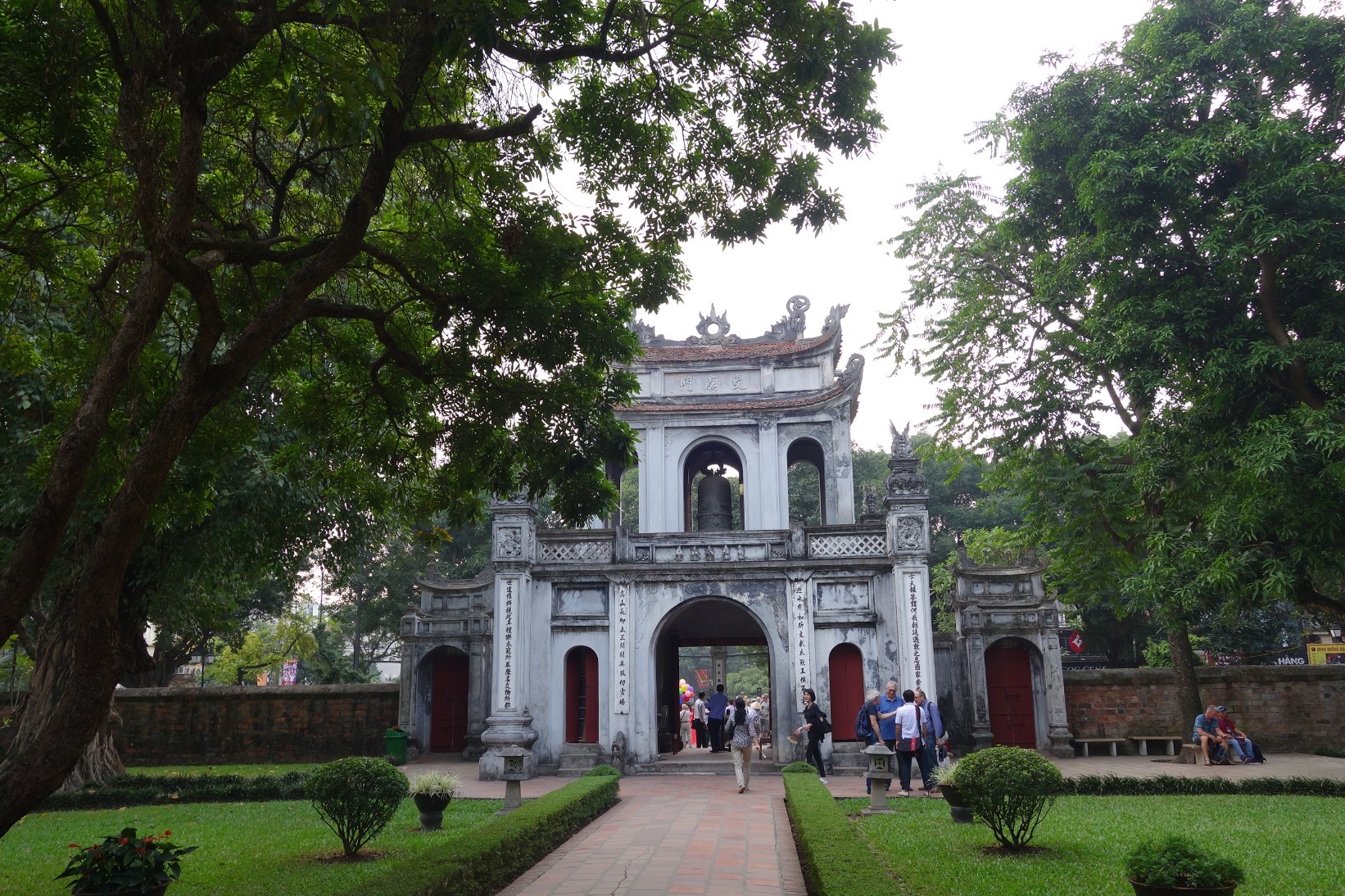
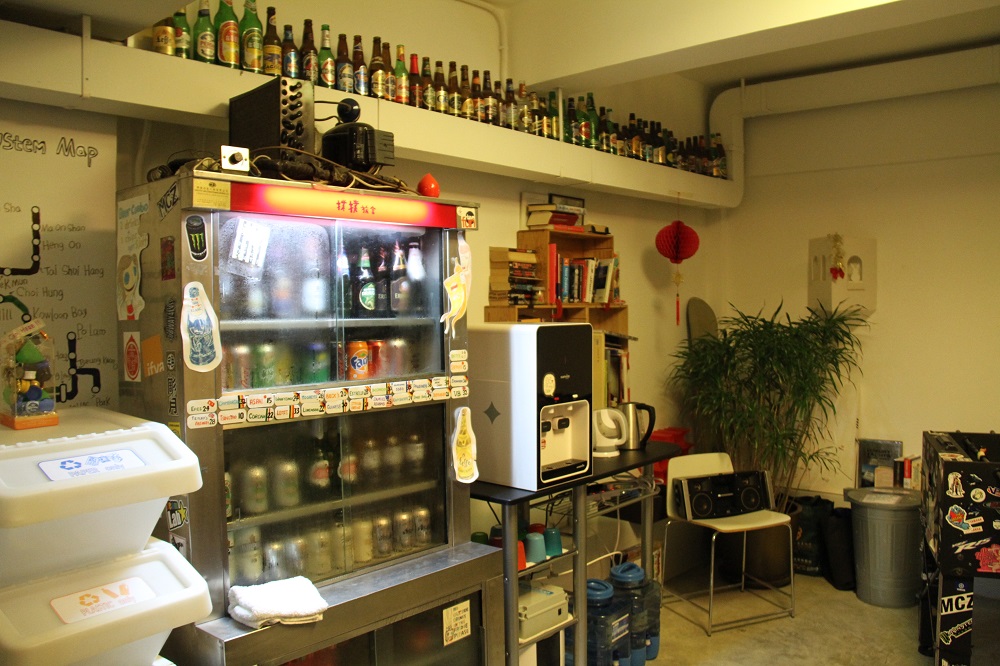
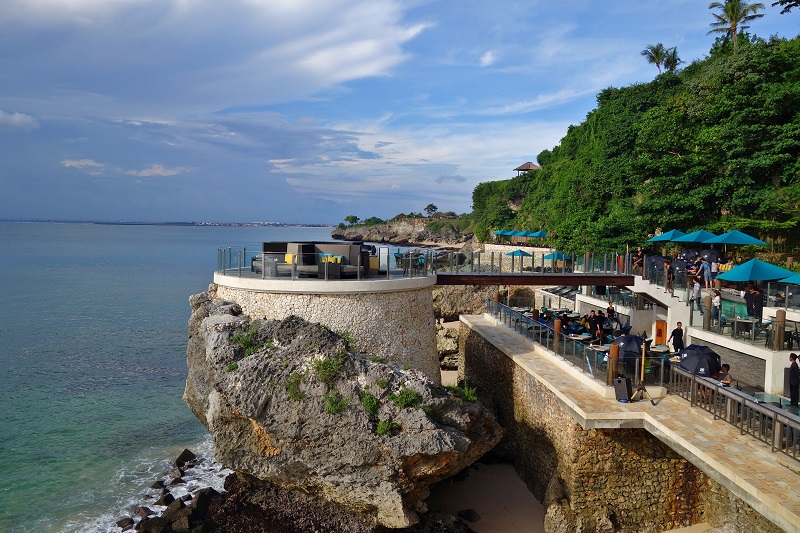
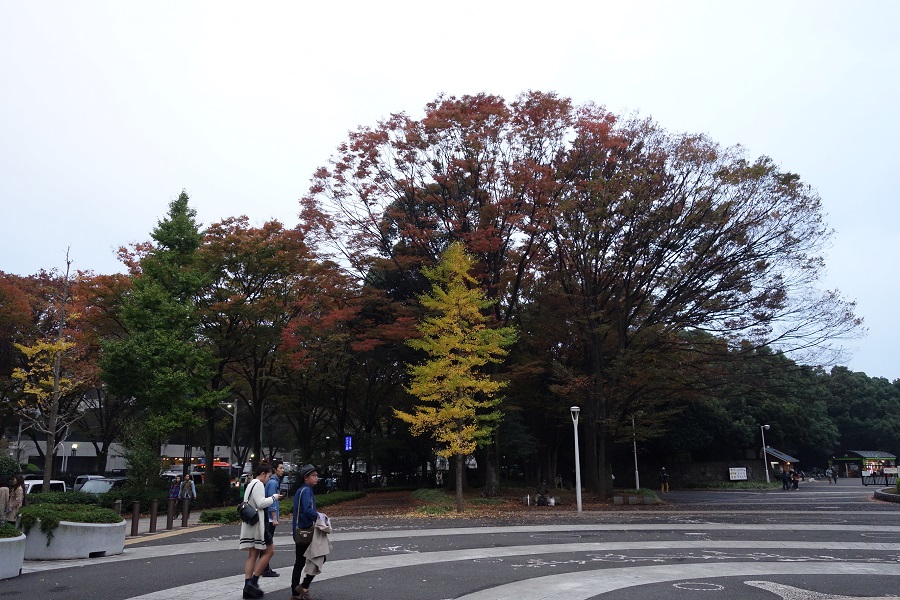
I love that you went into all the details about the tortoises and cranes and all… those are the parts of temples I love! it’s never fair to visit a temple without knowing all these things because so much incredible history and details are lost. Can’t just visit and look at the architecture without being amazed at the history behind it, too.
I have been reading a lot about Hanoi and Vietnam but did not know that a temple of literature exists in Hanoi. The architecture has that antique character from a bygone era. I am adding this to my bucket list.
Abhinav Singh recently posted…THE KHYBER HIMALAYAN RESORT AND SPA IN GULMARG, KASHMIR IS THE ULTIMATE LUXURY EXPERIENCE.
This is amazing! It definitely looks like a nice blend of local culture and history. The details on the gates (especially on the Main Gate) looks amazing too! I definitely will visit when I go to Vietnam!
Alice Chen recently posted…Itinerary: The Ultimate 7 Days in Beijing
I love books and read a lot so this is wonderful and certainly something I had no clue about. It is so important and nice to see a temple that celebrates literature and the photos are really cool with the architecture and the colours. Not only that the integration of culture and tradition adds more charm to it. Definitely a place to visit and pay homage to. Thanks for the information.
What a gorgeous place! It looks like you could spend the whole day there exploring. I love the details on the deco- so much attention to the detail. We love knowing the info like the symbolism of the tortoise and crane! It really makes it all so much more interesting to know that sort of thing. We take the kids and keeping them interested means giving them a lot of things to think about in relation to what you are seeing.
Natalie recently posted…TOP Travel Activities for KIDS
I’ve seen a lot of post about Vietnam but I think this is the first time I’ve read about the Temple of Literature. The oriental culture never fail to amaze me. I love the engravings in every temple, they are very artistic! Thanks for sharing!
What a magnificent temple, definitely a must visit while visiting Hanoi! Hahah the fruits do look like a scary alien hand. And so lucky for the students to graduate at a place that has so much significance in history and literature!!
I can see why The Temple of Literature is one of Hanoi’s favourable highlights. The courtyards are all so beautiful with so much to explore. Such interesting facts about the representation of the Tortoise and the stelae of doctorates inspiring the art of study to all contemporary individuals. It would have been quite the university to study at back in the day.
I am going to remember Cosy biscuits from now on. It is funny! On the positive side, biscuits will last longer than fruits and eggs as offerings. The sculptures of the 3 kings look really nice. They are very detail-oriented.
Iza Abao recently posted…Where To Eat In Hobart Harbour & Salamanca Place